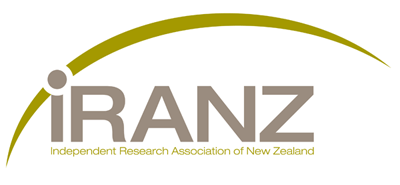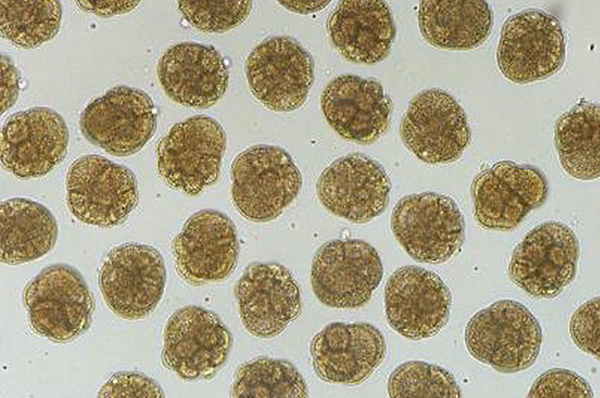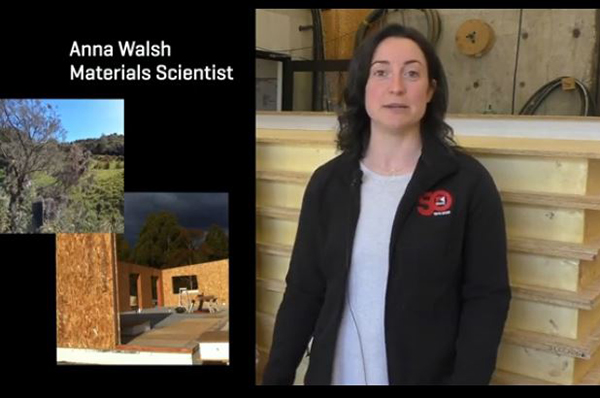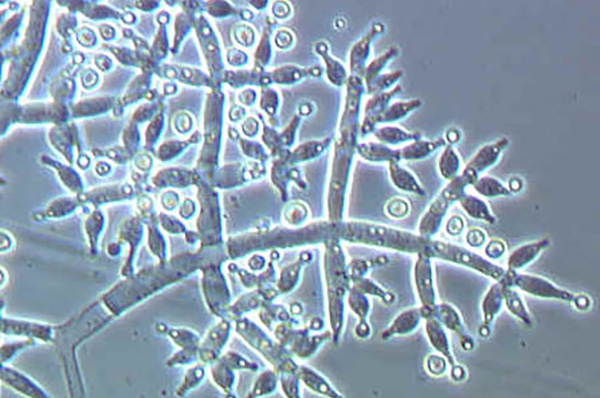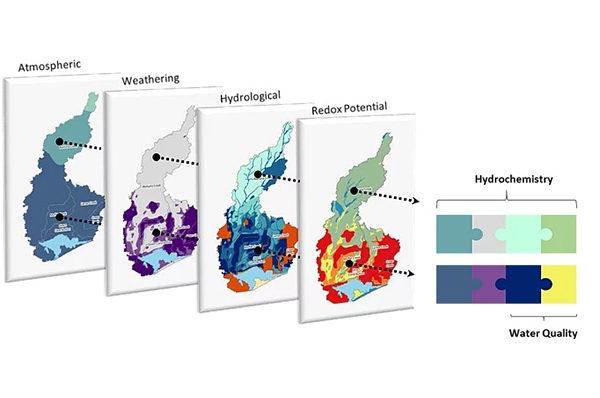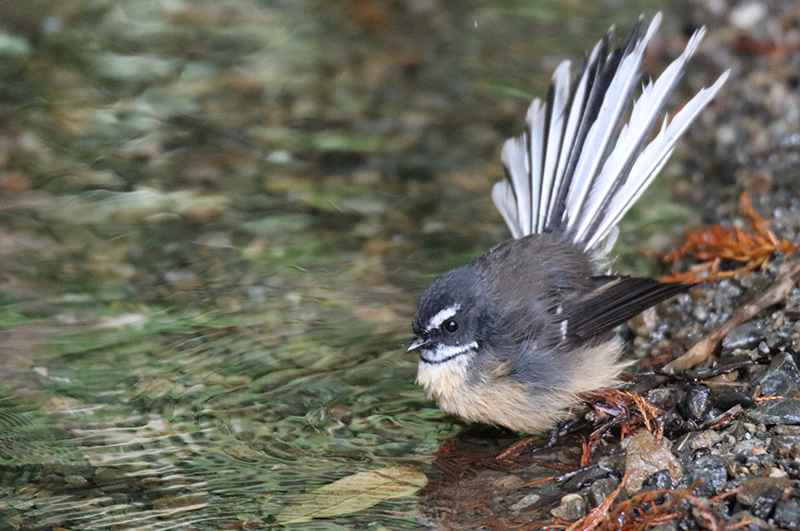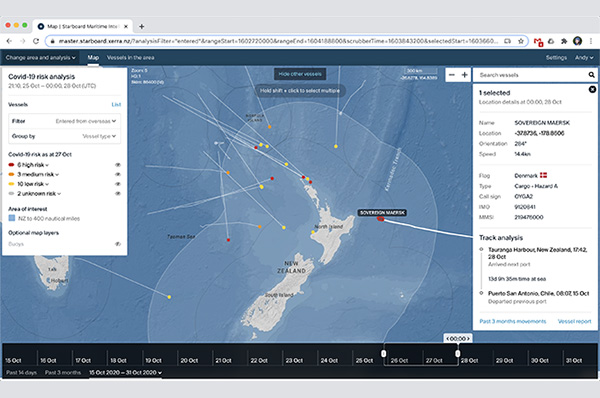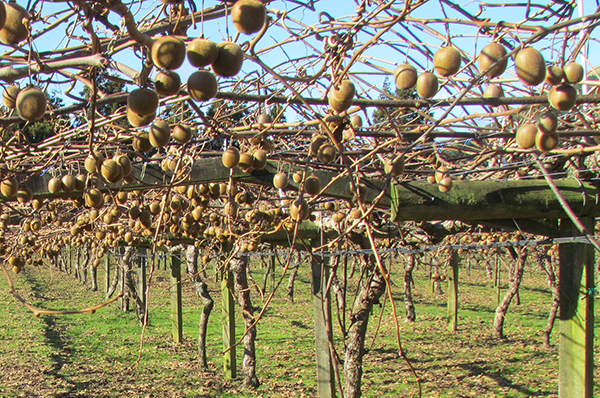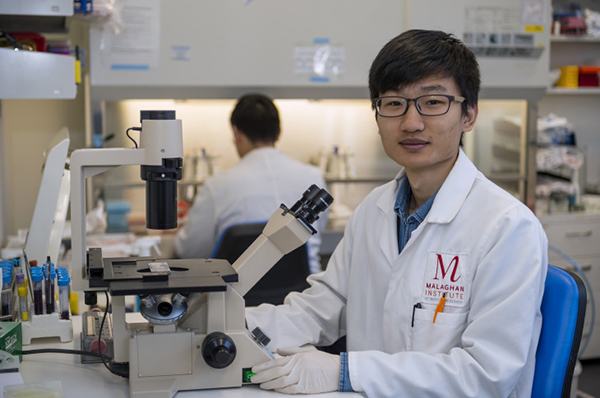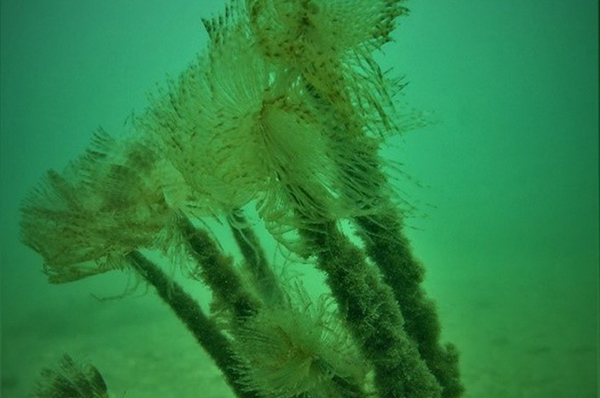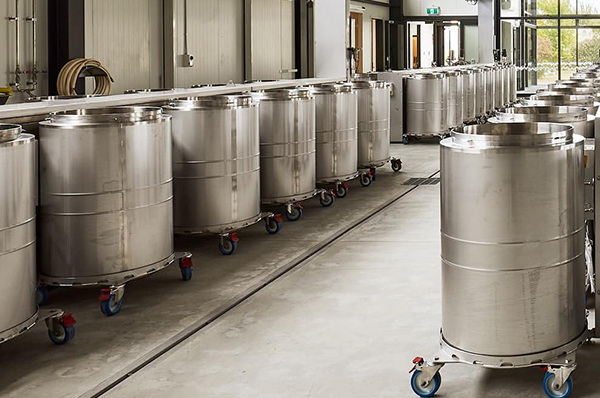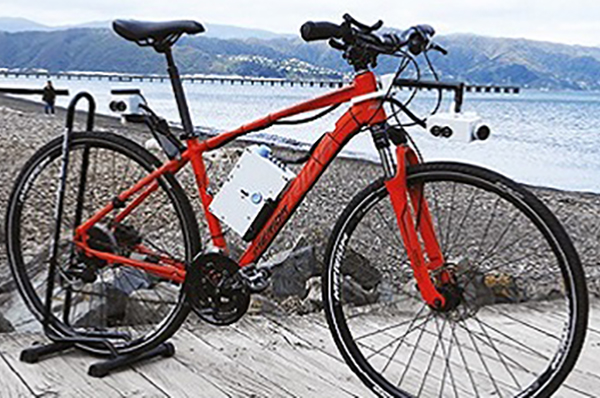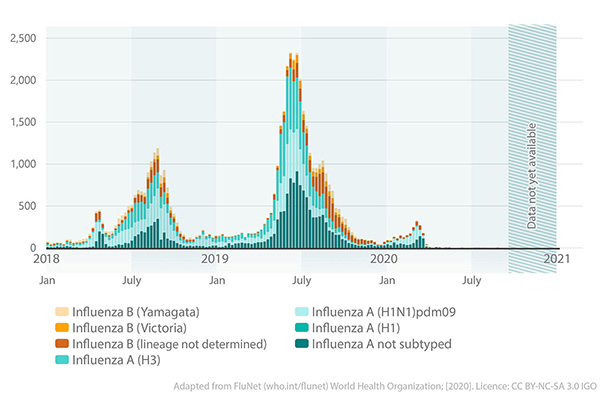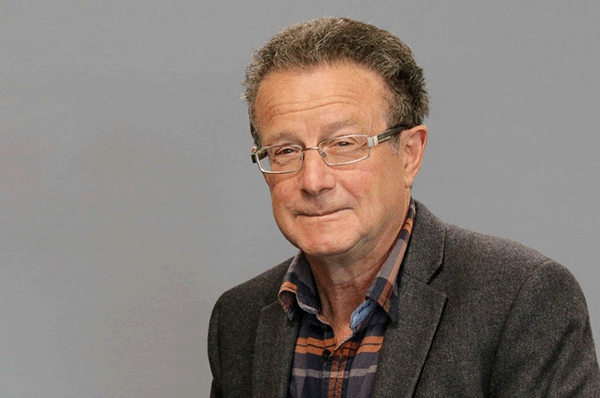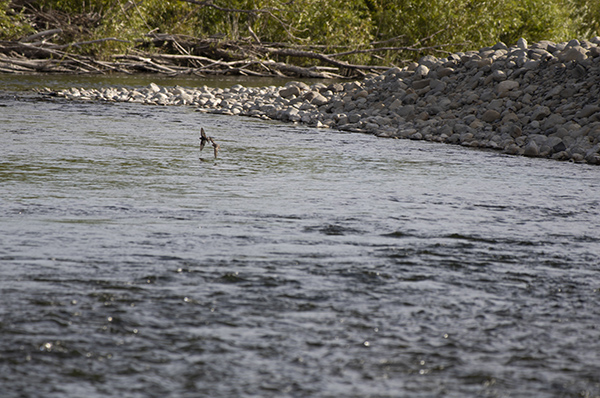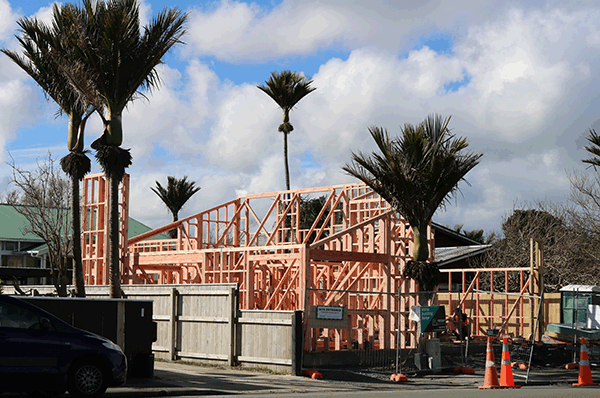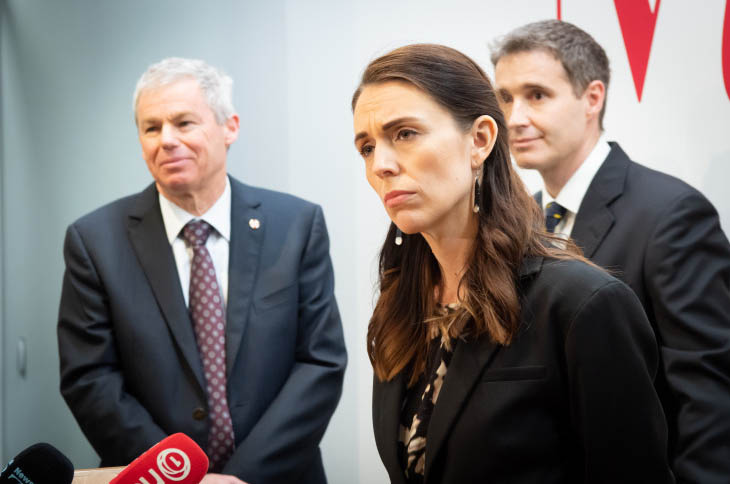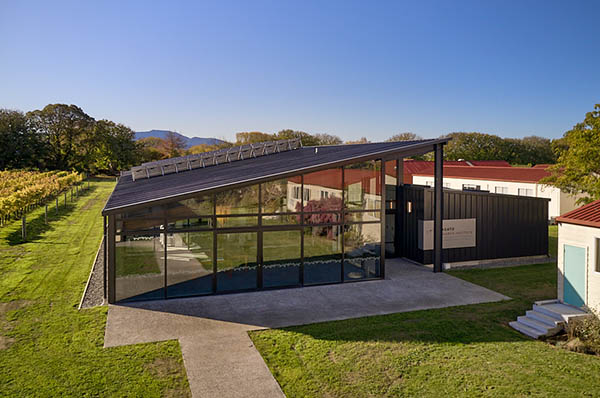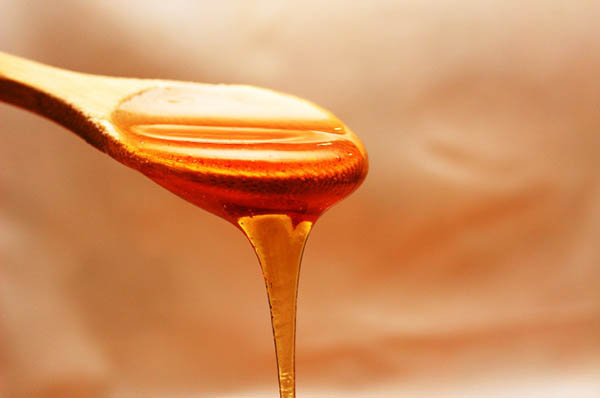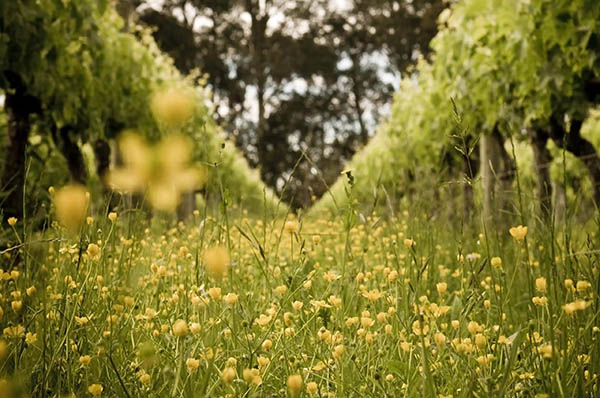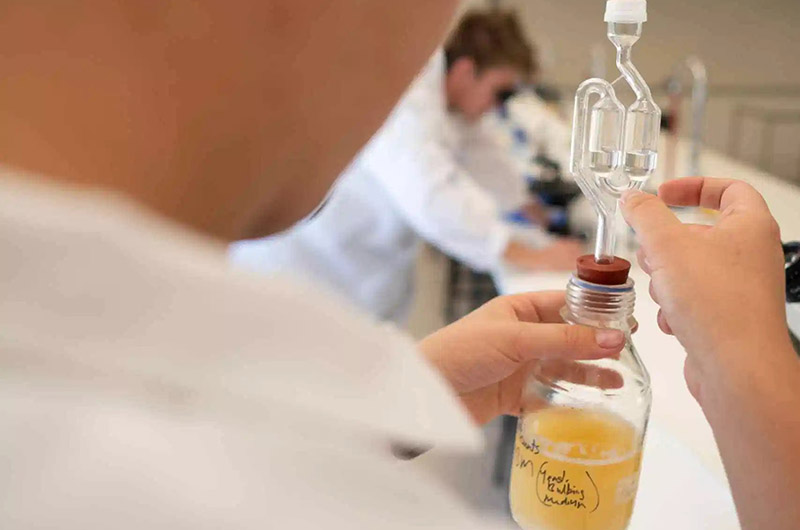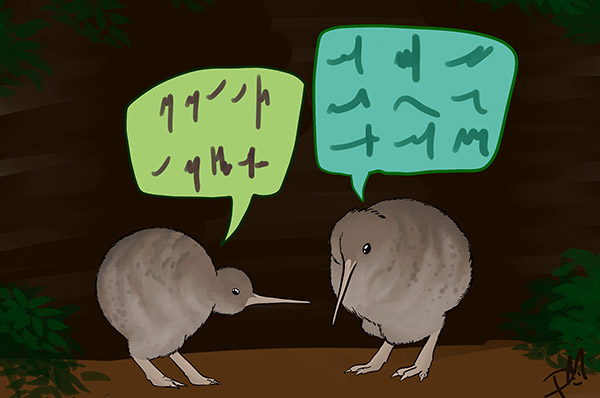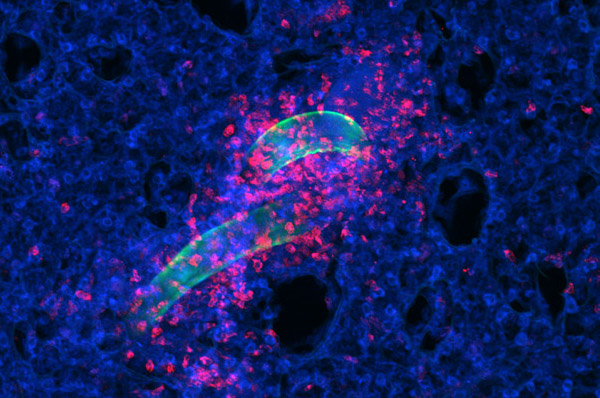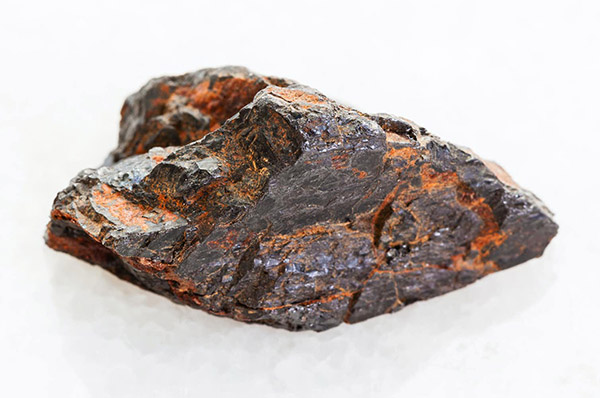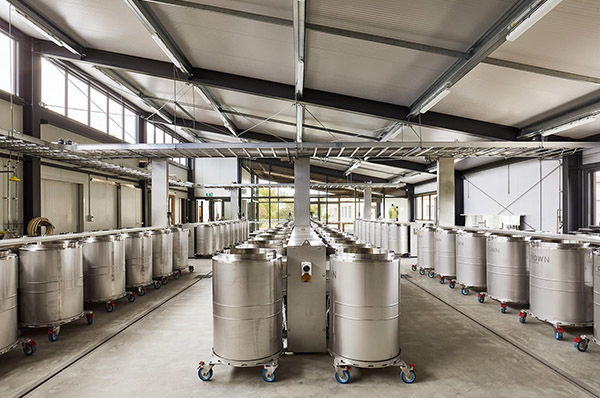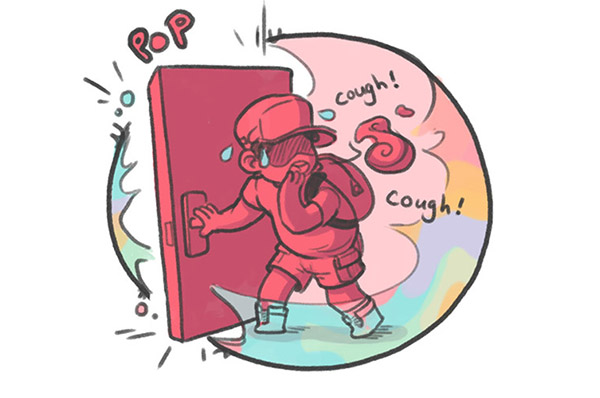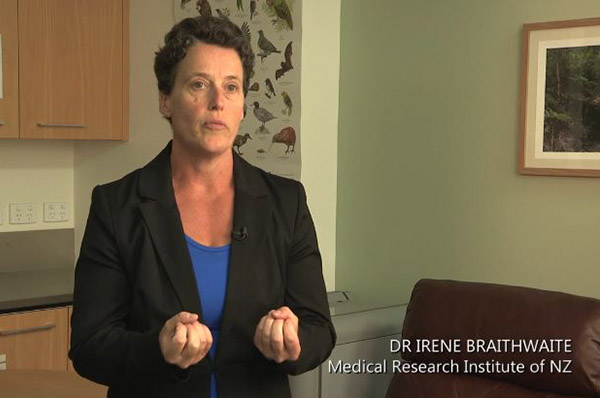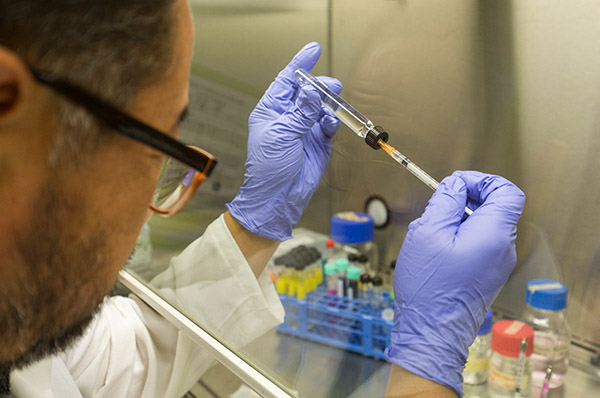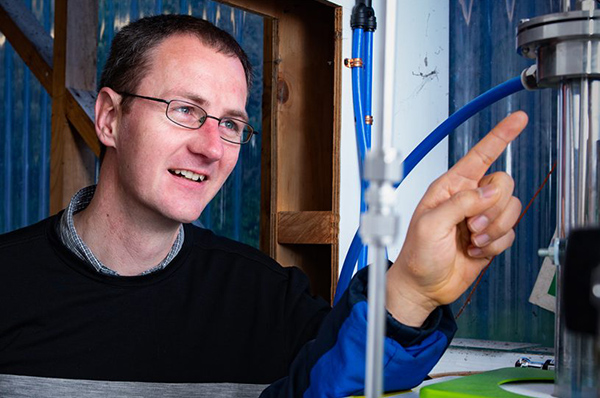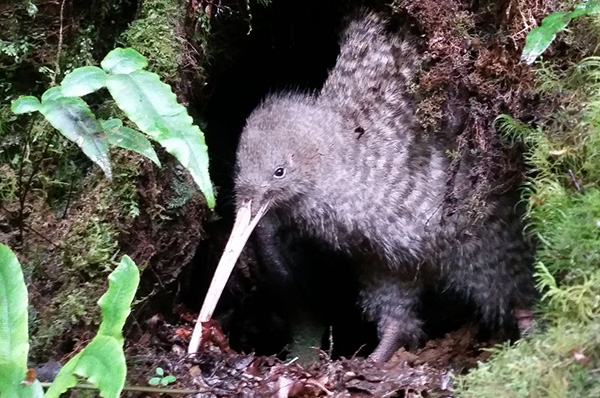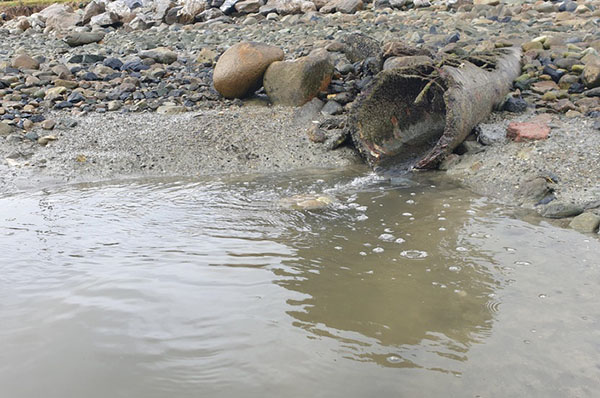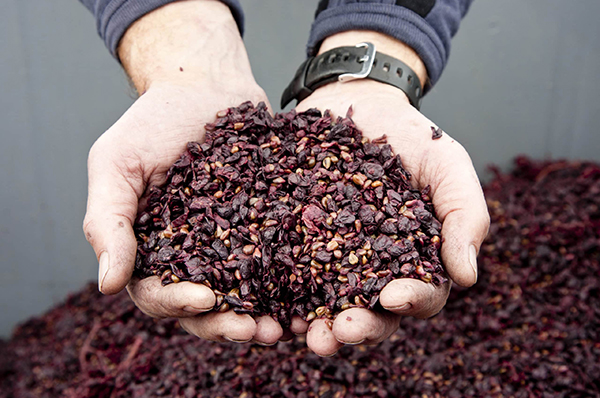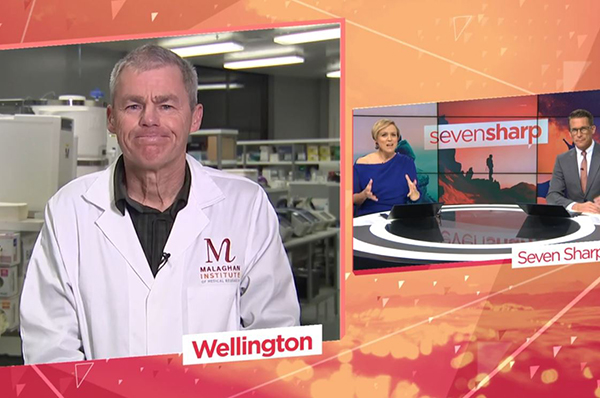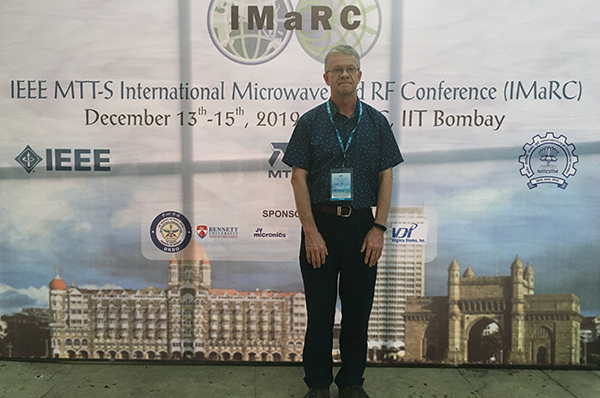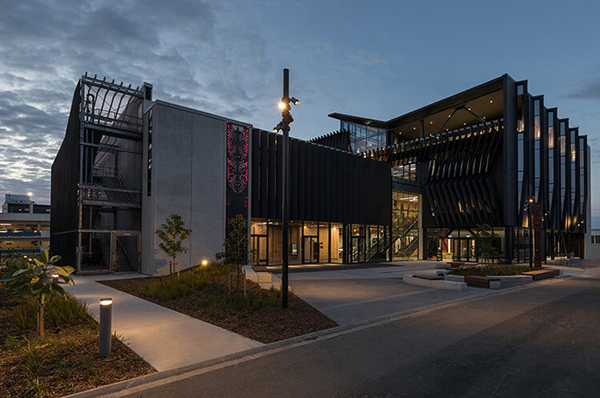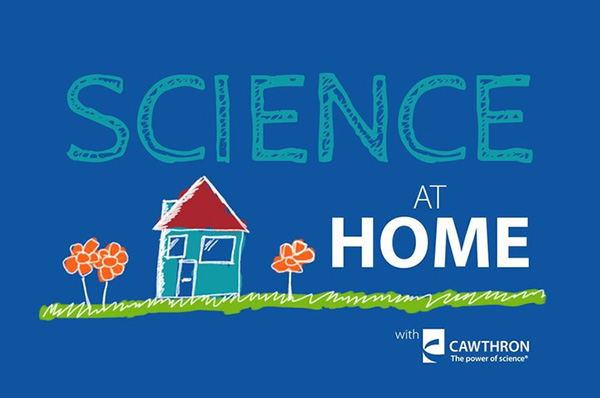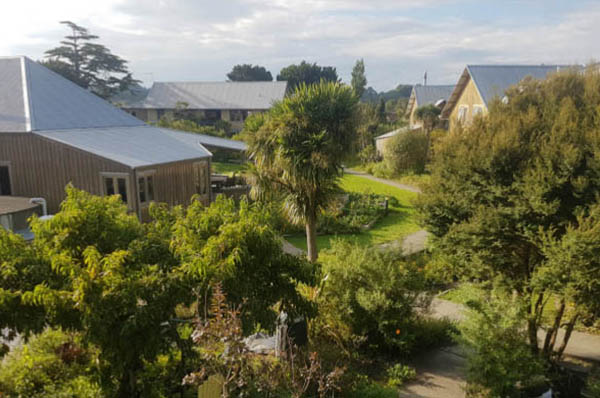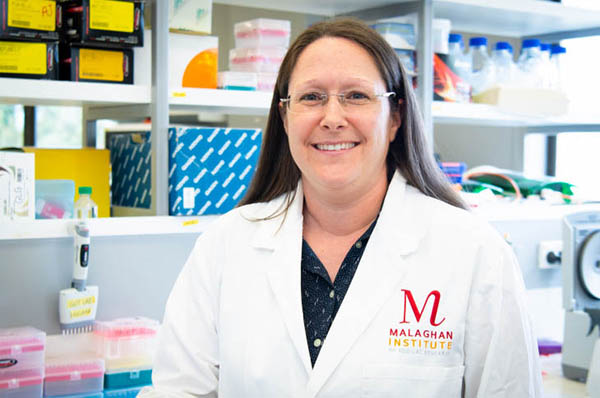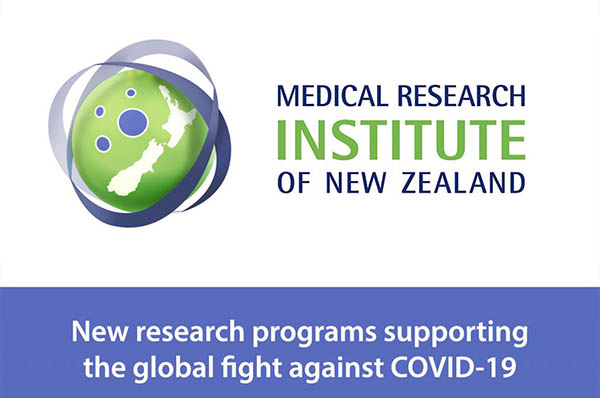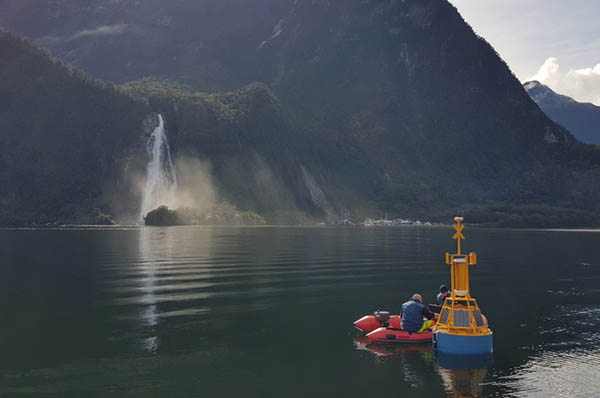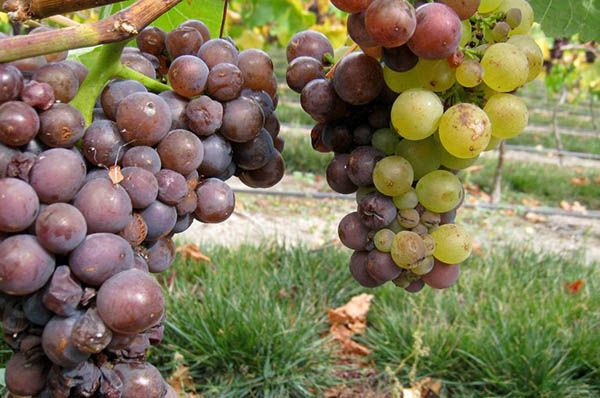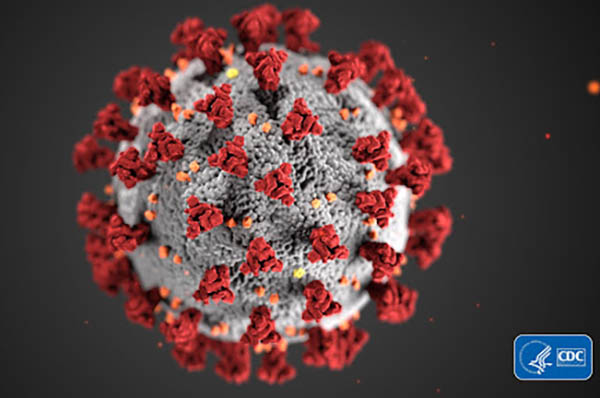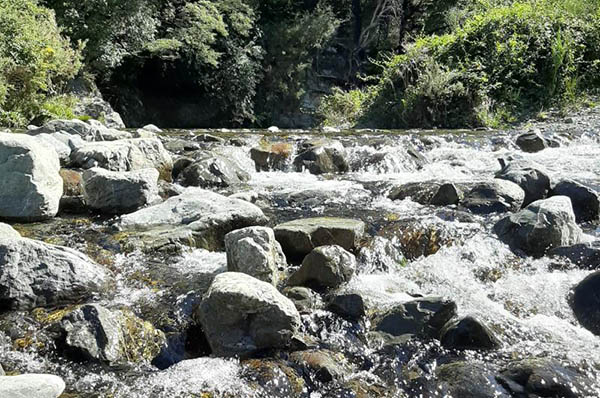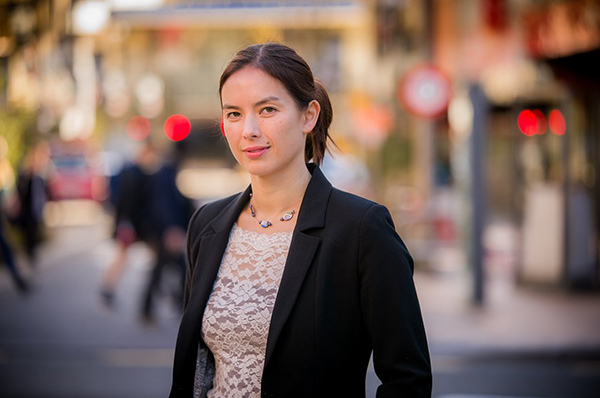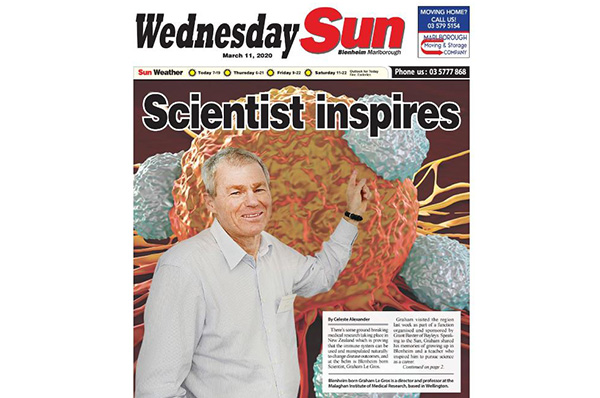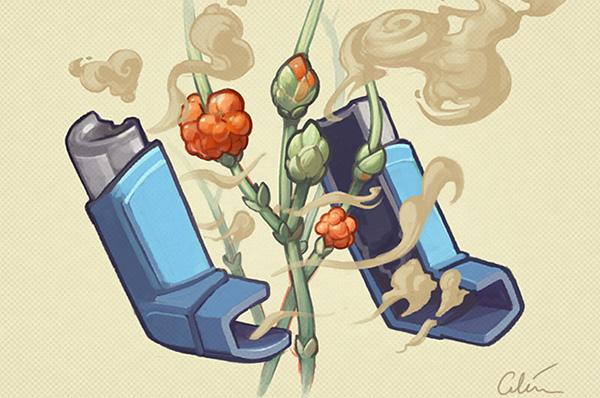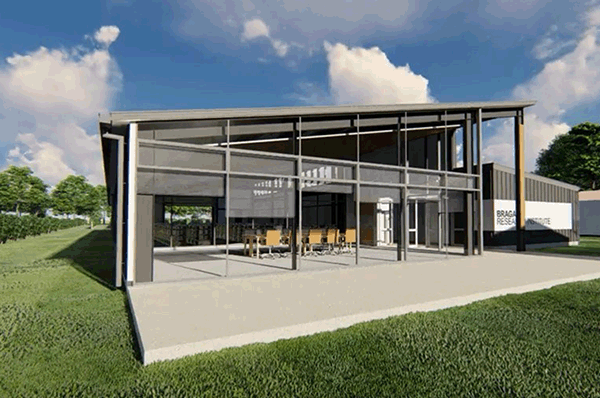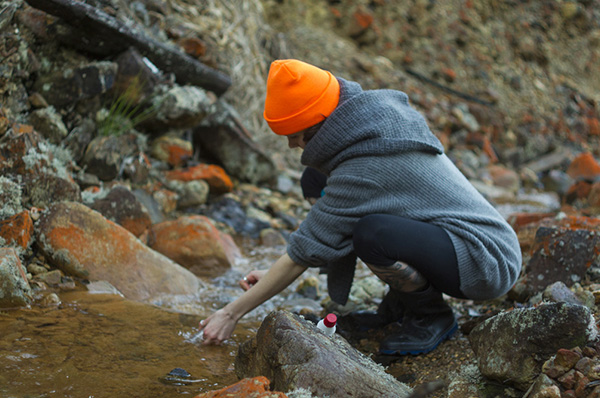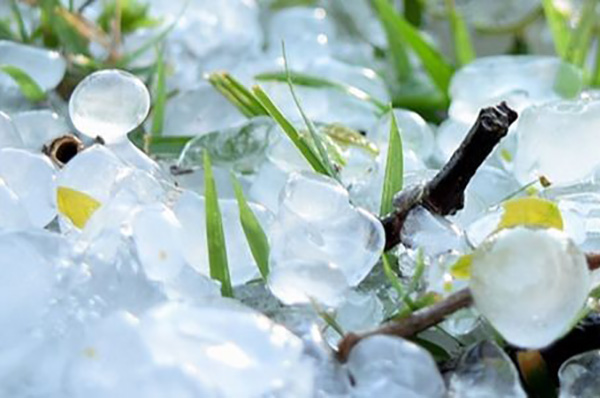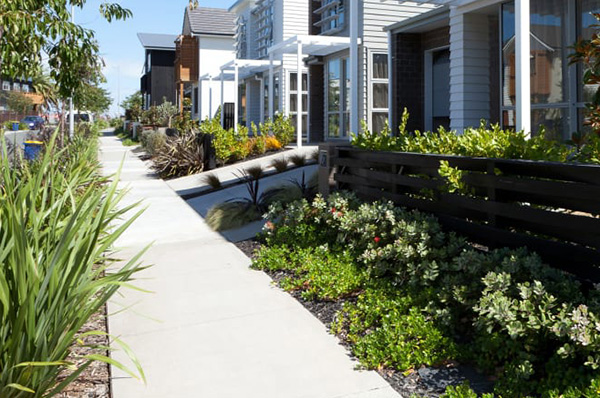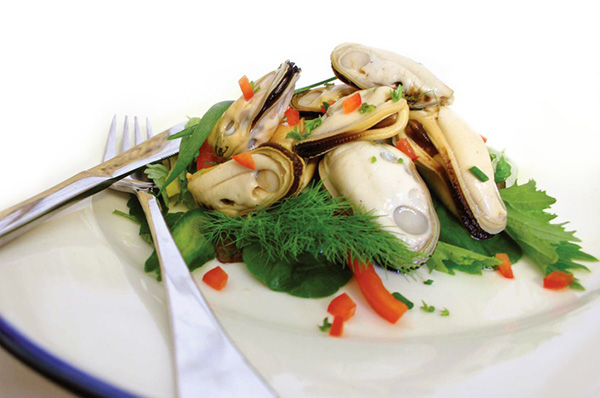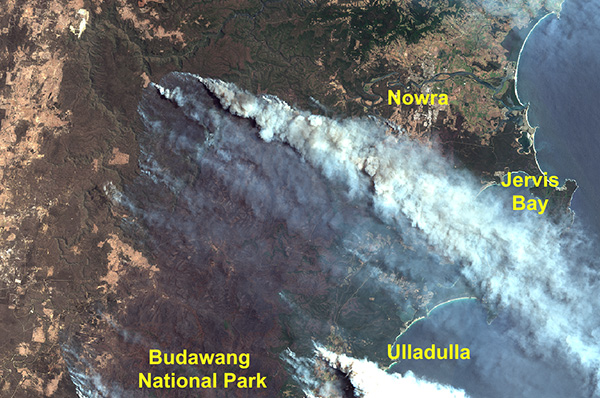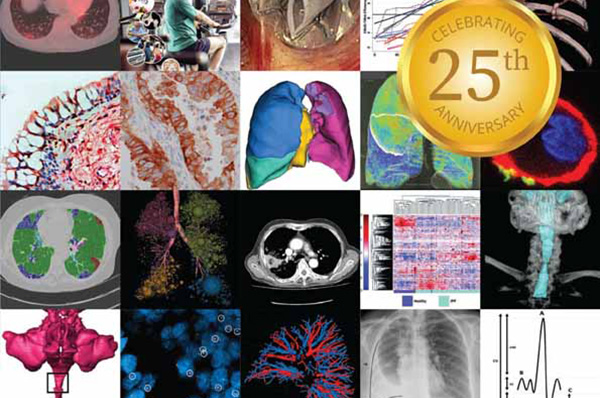News 2020
Archives: 2024 | 2023 | 2022 | 2021 | 2020 | 2019 | 2018 | 2017
News Archives 2020
Connections 31 eNewsletter out now
December 2020: The latest IRANZ newsletter is out now. Stuffed full of science research goodness from New Zealand's independent research organisations.
Read all about how IROs focus on targeted research; Lincoln Agritech's partnership to hunt helpful fungi; the latest on NZ's COVID-19 vaccine research; Land and Water Science's physiographic approach; BRANZ's research into Structural Insulated Panels (SIPs); how Xerra is aiding NZ's COVID-19 maritime border security; how a Lincoln Agritech scientist constructed a microwave lens from 1900 pieces during the lockdown; Cawthron's progress into cryopreservation for greenshell mussels; PlantTech's work with Zespri; Malaghan's work on cancer immunotherapies; the Bragato Research Institute's pulse cooling trials; MRINZ's revelation that the annual flu epidemic was a Southern Hemisphere no-show for the first time since records began; and much more.
Two IRANZ members, Xerra Earth Observation Institute and the Cawthron Institute, are teaming up the University of Waikato as early adopters on the NASA - National Aeronautics and Space Administration PACE science mission. Image: NASA.
IROs focussing on targeted science
December 2020: IRANZ welcomes the reappointment of the Hon. Dr Megan Woods as Minister of Research, Science and Innovation and the appointment of the Hon. Dr Ayesha Verrall as Associate Minister of Research, Science and Innovation.
IRANZ Chair, Dr John Bright says that Independent Research Organisations (IROs) are looking forward to continuing to work with the Minister on strategies, policies, and investment portfolio directions which affect IROs. “This will be particularly important with initiatives and changes arising from Te Pae Kahurangi (CRI Review), and a new Research, Science and Innovation Strategy.”
John says the Government recognises that IROs provide important targeted research and expertise in specific economic, environmental, and social areas not adequately covered by CRIs and universities. But he warns that New Zealand’s science system does need some tweaking.
Greenshell mussel embryos. Cawthron’s Aquaculture Park is the national centre of excellence for shellfish aquaculture research, development, and production. Image: Cawthron.
IRANZ news briefs
December 2020: Follow the link for more details on the November 2020 news briefs from our Independent Research Organisations.
- Welcome to the incoming Minister and Associate Minister
- Prof Charles Eason looking forward to new science governance opportunities
- BRANZ’s Anna Walsh wins RSNZ’s Early Career Researchers Ataata Video Competition
- Freemasons New Zealand continue to back CAR T-cell research
- Cawthron Institute supports report calling for consistent & robust monitoring of estuaries
- Motu's John McDermott on monetary policy and other COVID-era economic issues
- TiDA's Mike Fry presenting a seminar at EMEX in Feb 2021
- Dr Dianne McCarthy has joined Bragato Research Institute as an independent director
Anna Walsh, a materials scientist at BRANZ, has won the Royal Society of New Zealand’s Kaiarataki Achiever Award in the professional video category with a $2000 prize for her video on structural insulated panels.
Britain approves Pfizer vaccine to roll out next week
December 2020: Malaghan Institute and Vaccine Alliance Aotearoa New Zealand - Ohu Kaupare Huaketo’s director Professor Graham Le Gros speaks with TVNZ's Breakfast show on 3 December on news from the UK, where the Pfizer/BioNTech coronavirus vaccine has been approved for use - the first country in the world to do so.
“This time a year ago, we didn't even know anything about Covid-19... and here we have a safe vaccine, very fast, and it's actually going to be putting some brakes on its spread and stopping it killing people.”
For this interview and other videos featuring IRANZ members please see our video page in the link below
Lincoln Agritech partnership hunts helpful fungi
December 2020: Lincoln Agritech is collaborating with Ngāti Whare’s Minginui Nursery, near the Whirinaki Te Pua-a-Tāne Conservation Park, on a five-year Ministry of Business, Innovation and Employment funded nitrogen-fixing research programme. They are helping to identify and collect Trichoderma, fungi that live in symbiosis with plant roots, which Lincoln Agritech researchers are using to increase plant resilience and health.
The Minginui Nursery, which officially opened almost two years ago, has ramped up capacity to grow over 1,000,000 plants per year, supplying cold-hardy natives, such as tōtara, rimu, and kahikatea, on a commercial scale. The nursery is merging the old and the new to build a new sustainable indigenous forestry industry.
Conidiophores of Trichoderma harzianum. Image: US Department of Agriculture, Agricultural Research Service, Systematic Botany and Mycology Laboratory.
Malaghan: COVID-19 vaccine update
December 2020: The Malaghan Institute of Medical Research and partners at the University of Otago and Victoria University of Wellington are helping lead efforts to secure a COVID-19 vaccine for New Zealand as part of Vaccine Alliance Aotearoa New Zealand – Ohu Kaupare Huaketo.
Vaccine Alliance Aotearoa New Zealand – Ohu Kaupare Huaketo (VAANZ) brings together a multidisciplinary team of local and international collaborators with proven capability in vaccine research, development, and scale-up manufacturing.
As part of the Government’s COVID-19 vaccine strategy, VAANZ has been tasked with establishing a national COVID-19 vaccine evaluation and development platform to screen, trial, and accelerate the development of potential domestic and international COVID-19 vaccines.
To that end, the Malaghan Institute has recently welcomed the arrival of Dr Frances Priddy, former Chief Medical Officer and Vice President of Clinical Development at the International AIDS Vaccine Initiative in New York.
Dr Frances Priddy has recently joined the Malaghan Institute to further work on a NZ COVID-19 vaccine solution. Image: Malaghan Institute.
Land & Water Science takes physiographic approach
December 2020: Land & Water Science, based in Invercargill, has been using a physiographic approach to several key research projects on New Zealand’s water quality. The physiographic approach is an integrated or ‘systems view’, which links landscape attributes and the key processes governing water quality outcomes in surface and shallow groundwater. For example, the relationship between soil drainage (attribute) and redox (process - reduction of oxygen and oxidation) can be used to predict soil denitrification potential.
Unlike other mapping and classification approaches, the physiographic approach incorporates water quality, hydrochemical, and/or hydrological response signals into a spatial format to identify, select, combine, and classify those landscape gradients that drive variation in water quality outcomes.
Land & Water Science Director Dr Clint Rissmann says that physiographic science offers an increased understanding of the landscape processes, which then allows for implementing management practices within the local and catchment-scale.
Example of the physiographic mapping undertaken for the Waituna Catchment, Southland. Image: Land & Water Science.
Aqualinc wins 2020 Innovation in Irrigation Award
December 2020: Aqualinc has been awarded the Irrigation New Zealand Innovation in Irrigation Award for 2020, in recognition of their work for the Fertiliser Association of New Zealand on N-Wise irrigation strategies. This work demonstrated that by changing irrigation management practices an average 27% reduction in modelled nitrogen loss to water is achievable, with minimal impacts on average annual pasture production.
Award sponsor Ballance Agri-Nutrients Ltd presented the trophy and plaque to project leader Dr John Bright at the Irrigation NZ AGM last week. Ian McIndoe and Birendra KC were also part of the project team.
Aqualinc researchers are currently establishing a field trial site for further work, funded by Ministry for Primary Industries (MPI)’s Sustainable Land Management and Climate Change programme, to test N-Wise irrigation strategies on a commercial dairy farm under realistic conditions of water-supply uncertainty. The project is also supported by DairyNZ, Waterforce, and Central Plains Water Ltd.
The Aqualinc team winning the Innovation in Irrigation Award, from left Ian McIndoe, John Bright, and Birendra KC.
Motu: Economic policy for better fresh water
November 2020: Issues around the health of our rivers and lakes are front of mind for many New Zealanders. As pressures on water resources increase in New Zealand, so does the need for alternative policy approaches that can adequately address the demands of competing interests.
A new research paper by Motu Economic and Public Policy Research presents the array of different policy instruments available for managing fresh water quality and quantity and provides insights into how the various instruments can be used to incentivise behaviour change.
“We already have many policy instruments in New Zealand, but they’re currently underutilised,” says Dr Julia Talbot-Jones, one of the authors of the paper. “The policies differ in the extent to which they incentivise innovation and behaviour change. In this research we have outlined the barriers and opportunities affecting their wider implementation at various scales across New Zealand.”
Fresh water is an important resource across the whole environmental spectrum. Photo: Louise Thomas.
BRANZ: Structural insulated panels building NZ’s future?
November 2020: With the quality, speed, and cost of New Zealand construction under the spotlight, a building system claiming to deliver on all three deserves a close look, according to researchers at BRANZ.
BRANZ materials scientist Anna Walsh has set up a project to look at the system, which is based on structural insulated panels, or SIPs. “SIPs are sandwich panels made of two face layers and an insulating inner core,” explains Anna. She says the panels can be prefabricated and assembled on site, potentially increasing construction speed and reducing building costs.
SIPs have been widely used overseas for several decades but are relatively new to the market here. “We want to know more about their performance in New Zealand,” says Anna. “We will look at how the panels stand up to our climate and how they perform in the event of an earthquake or fire.”
BRANZ structural engineer Dr David Carradine checks a SIPs panel undergoing lab testing for earthquake resilience. Photo: Niall Harkin, BRANZ.
Xerra aids NZ’s COVID-19 maritime border security
November 2020: COVID-19 has changed many facets of people's lives in Aotearoa New Zealand. Although kiwis have enjoyed relative freedom in recent months, maintaining vigilance at New Zealand's maritime borders whilst minimising disruptions to trade is a challenging endeavour.
Xerra Earth Observation Institute, an independent research institute with expertise in satellite data, has been awarded $850,000 through the Ministry of Business, Innovation and Employment’s (MBIE’s) COVID-19 Innovation Acceleration Fund to support border security efforts in New Zealand and the Pacific Islands. The funding will be used to accelerate the delivery of two maritime border security tools in their Starboard Maritime Intelligence platform.
The first of these tools will allow them to automatically assess arriving vessels for risk of COVID-19 by simulating the likelihood of infected crew based on the vessel’s historical travel movements, including port visits and duration at sea.
Xerra's Starboard Maritime Intelligence program to monitor vessels entering New Zealand's waters. Image: Xerra.
Lincoln Agritech scientist constructs microwave lens from 1900 pieces
November 2020: Dr Kim Eccleston from Lincoln Agritech took advantage of the peace offered by lockdown to assemble a microwave metamaterial lens from 1900 intricate components. The lens is one of the major elements of a new medical scanner that the Electromagnetics team is developing.
Two years ago, Lincoln Agritech was awarded $6m from the Ministry of Business, Innovation and Employment (MBIE) Endeavour Investment fund to develop a hand-held, non-contact medical scanner that images bone and tissue with sub-millimetre resolution. The Electromagnetics team is leading the programme and is collaborating with researchers from Waikato and Auckland Universities, the Auckland Biomedical Institute, and the University of Nice-Sophia Antipolis (France). The proposed technology will use the unique focusing properties and imaging potential of evanescent waves, which are components of microwaves and can safely penetrate the body, to construct three-dimensional images.
Dr Kim Eccleston displays the completed microwave metamaterial lens - an important component of a hand-held medical scanner set to revolutionise field medicine. Photo: Lincoln Agritech.
TVNZ Breakfast: New US COVID-19 vaccine almost 95 per cent effective, tests show
November 2020: A new COVID-19 vaccine from US company Moderna has tested to be almost 95% effective.
Director of Vaccine Alliance Aotearoa New Zealand Professor Graham Le Gros says it’s very exciting news and looks good for the ‘bulk of the population.’.
Graham, who heads the Malaghan Institute of Medical Research in Wellington, was interviewed on both radio and television on the latest COVID-19 vaccine news.
RNZ: COVID-19 - Unanswered questions remain about vaccine
In this RNZ Morning Report interview with Susie Ferguson, Graham discusses the Pfizer COVID-19 vaccine found to be 90 percent effective in recent trials, but with the vaccine having to be stored at extremely cold temperatures. Many questions remain to be answered - including how long the vaccine lasts.
New Zealand is one of only a handful of countries with prior arrangement to get the vaccine.
Professor Graham Le Gros on TVNZ's Breakfast. Click the link below to watch the video.
Motu’s Arthur Grimes warns of 'real danger' of destablising asset prices
November 2020: Interest.co.nz’s Jenée Tibshraeny recently interviewed Motu Economic and Public Policy Research's Professor Arthur Grimes. Arthur warns of 'real danger' of the RBNZ destablising asset prices, as its employment target sees it go too far lowering interest rates.
Despite the RBNZ slashing already-low interest rates, consumer inflation remains stubbornly low, while asset price inflation is taking off. People are using cheap debt to pile into the property market, chasing yield there, as well as in the share market.
“It’s a real danger that the Reserve Bank is just destabilising asset prices, which is going to come home and really hurt the economy down the track,” says Arthur.
He maintained the issue stemmed from a 2018 law change requiring the RBNZ’s Monetary Policy Committee to target “maximum sustainable employment” as well as inflation.
Arthur, who vocalised his opposition to the change at the time, said we’re now seeing the consequences of that “huge mistake”.
Professor Arthur Grimes. Photo: Victoria University of Wellington.
Cawthron progresses cryopreservation for greenshell mussels
November 2020: Globally aquaculture is one of the fastest growing food production sectors. Over 50% of fish, shellfish, crustacea and aquatic plants in our food supply now come from aquaculture and this trend in growth is projected to continue. Sustained growth of the sector requires hatchery production to underpin the supply of juveniles for on growing. Alongside of this are selective breeding programmes.
In an MBIE-funded Shellfish Aquaculture Research Programme, Cawthron researchers and collaborators at the Spanish University of Vigo set out to develop a reliable protocol for freezing veliger larvae of greenshell mussels.
Cryopreservation can be a useful tool for breeding programmes because it provides a backup of germplasm for breeders to go back to, should breeding stocks be lost for any reason (e.g. severe weather events) or should breeding objectives change (e.g. selection for resilience to emerging diseases). Cryopreservation can also be used to create reference lines that can provide a benchmark between different cohorts and measure true genetic gain.
Greenshell mussel embryos. Photo: Cawthron Institute.
PlantTech sign on as Zespri research partner
November 2020: PlantTech has signed on as a long-term research partner with Zespri, following successfully completing two research projects for the kiwifruit giant. The projects demonstrated applying AI technology to challenges relating to crop estimation and factors that affect the performance of fruit post-harvest as it moves through the supply chain.
The digital crop estimation project, in particular, proved PlantTech’s worth, says Zespri Innovation Manager Dr Juliet Ansell.
The challenge was to develop computer vision algorithms to perform a sample crop estimation using Zespri’s existing camera technology, which is already in use for collecting fruit count data.
“It was a competitive process; lots of people had a go at doing the same thing but PlantTech’s results were outstanding.”
The project, involving state-of-the-art deep learning approaches and machine learning techniques, was also valuable in demonstrating how it could quickly process large volumes of Zespri data collected from an orchard.
Zespri is a grower-owned company and the world’s largest marketer of kiwifruit. Photo: Louise Thomas.
RNZ: 'Transformational 9 months' as scientists race to find COVID vaccines
November 2020: RNZ Saturday Morning. American vaccine expert Dr Fran Priddy, who recently joined the Malaghan Institute as clinical director of the Vaccine Alliance Aotearoa NZ (VAANZ), talks with Kim Hill from Radio New Zealand about New Zealand's COVID-19 vaccine effort.
Fran told Saturday Morning that the global effort to find an effective vaccine to deal with COVID-19 was hugely impressive. She expects there will probably be data available early in 2021 as to whether some of the international vaccines currently being trialled on people are effective, and then there will be a plan to start rollout.
She said it has been a "transformational nine months" of science to get to this point and the cooperation and progress had been set up by previous work over 20 plus years. In the vaccine field that has involved using a lot of modern technologies such as sequencing and decoding the structure of small proteins in the body.
Dr Fran Priddy says it's astounding that a COVID-19 vaccine may be available in 2021. Photo: Malaghan Institute.
Motu: Following the "stars"
November 2020: "We haven't been this uncertain about where inflation would head over the next decade perhaps for 30 or 40 years."
Motu Chief Executive Dr John McDermott was recently interviewed by Gareth Vaughan of interest.co.nz on monetary policy and other COVID era economic issues. ". . . the economy needed rescuing. But somehow down the line we need to pay for this. If you start pulling back fiscal support too early you'll send all our economies into recession. Wait too late and you'll build up an incredible debt burden for future generations that will crush productivity. So there are big questions here. I'm not saying I have the answers, it will be challenging," says John.
Even before COVID-19, John notes there was a shift in how prices were being set through advances in technology, ongoing globalisation, and the rise of e-commerce. This was driving inflation down with new ways of doing things, such as Uber, emerging.
"The willingness of consumers to buy stuff off the likes of Amazon or a multitude of online shopping [websites], it changes the way prices are set. And we hadn't got to the bottom of that and then another big shock comes along. . . Nearly every advanced economy had missed its inflation target."
Dr John McDermott. Photo: Motu.
Malaghan improving cancer immunotherapies
November 2020: A recurring issue with many cancer immunotherapies is the difficulty of delivering the cancer-killing drug to the heart of a tumour. The internal environment of a tumour can be very different from the rest of the body, which helps the tumour resist treatment. Many tumours are ‘hypoxic,’ or oxygen-poor, making it hard for immune cells and cancer drugs to infiltrate a tumour, and on occasion even suppressing the immune response to the cancer entirely.
Dr Regan Fu, who recently completed his doctoral thesis with Professor Ian Hermans, is assessing immunotherapies in combination with the hypoxia-activated drug tarloxotinib. Through adding a hypoxic trigger that activates in the oxygen-poor intratumoral environments, higher doses of anti-cancer drugs can be delivered.
Hypoxia-activated drugs are also much more tumour-specific, resulting in less damage to healthy tissues surrounding the tumour. Future work is planned to better understand how tarloxotinib interacts with the immune system, with the aim of moving towards clinical trials.
Dr Regan Fu. Photo: Malaghan Institute of Medical Research.
Cawthron finds fanworm impacts marine habitat
November 2020: A recently published study by Cawthron has found that the presence of invasive Mediterranean fanworm (Sabella spallanzanii), a marine pest first detected in New Zealand in 2008, has a subtle, but significant impact on soft-sediment coastal environments.
The study involved a six-month field experiment in subtidal habitats along the Rangitoto Channel in Auckland’s Waitemata Harbour. It found that the fanworm did not necessarily have an impact on the abundance of life in benthic environments, but it did show that the fanworm’s presence changed the composition of that life.
The fanworm's feeding fans and leathery protective tubes create a dense, canopy-like structure extending up to 50 cm from its base. This can change several key features of the nearby environment – blocking light, providing a habitat for other species, and changing the way water moves through the seabed. The effects of fanworm incursions in New Zealand are likely to have both environmental and economic negative impacts.
The Mediterranean fanworm in soft sediment at Waitemata Harbour. Photo: Cawthron Institute.
BRI pulse cooling trials - energy saver for wineries
November 2020: A few years ago, David Gill of VinWizard started to install an option for ‘pulse cooling’ in his software for winery tanks. Customers weren’t asking for it, he wasn’t advertising it, and it wasn’t common practise among winemakers.
David had heard of pulse cooling — lowering temperatures of winery tanks in intervals rather than continuously — a few years prior from the University of California, Davis, when chemical engineer Professor Richard Boulton began to champion the energy-saving method in winery design.
“The idea is so simple,” says David, “and the potential for energy savings in wineries is huge. I began installing pulse cooling as an option in our systems with the intention of quantifying its benefits and communicating that to the customers later. But I haven’t had the opportunity to run a trial until now — at the Bragato Research Institute (BRI) research winery.”
BRI Research Winery. Photo: BRI.
NZIMMR: Enhancing Gold Recovery
November 2020: Every day, specks of gold which have been highly flattened or are too small to see pass through the screens of alluvial gold mines, uncaptured. NZIMMR is working on improving the recovery of this gold. With around 25,000-30,000 ounces of gold mined every year on the West Coast, the size of the prize is significant.
Processing methods continue to improve, however, NZIMMR research into gold recovery (and losses, as much as 30%) from Westland’s beaches shows that the finest gold size fractions and the more highly flattened gold grains continue to elude the miners’ grasp. The enhancing gold recovery project started with sampling West Coast mineral sands, and comparing the size and shape of gold grains in beach leads to those lost to tailings from recovery plants.
Having identified the characteristics of gold lost by current recovery methods, NZIMMR is now investigating ways of minimising gold losses and plans to test these at its Waimatuku minerals processing laboratory.
West Coast alluvial gold. Photo: NZIMMR.
WSP's Bart the Bike
October 2020: Meet Bart, WSP's next-generation instrumented bicycle that's helping provide a better understanding of the factors affecting cyclists’ experiences on New Zealand’s roads.
At WSP’s Research & Innovation centre in Petone, a world-first instrumented bicycle is helping provide a better understanding of the factors affecting cyclists’ experiences on New Zealand’s roads.
A team of behavioural scientists, sustainable transport experts and instrumentation engineers have undertaken innovative research for Waka Kotahi – the NZ Transport Agency, providing them with a solid scientific basis to inform their goal of improving levels of cycling throughout the country.
Jared Thomas is a leading expert in the research and design of spaces for vulnerable road users. He says that although it’s currently the most repressed mode of transport, there is potential for cycling to become the largest demand growth area.
Bart the Bike. Image: WSP Research.
MRINZ: Annual flu epidemic a no-show
October 2020: In a letter published in The Lancet medical journal on 23 October, researchers from the Medical Research Institute of New Zealand reported that this Winter there was no epidemic of influenza (the flu) in the Southern Hemisphere - the first time this has happened since records began. They think this is due to the community measures to prevent COVID-19 spread, such as social distancing, mask use, and travel restrictions. They speculate that some of these measures could be retained to prevent future influenza epidemics.
"As the Northern Hemisphere influenza season begins, challenges loom for health systems bracing to manage a simultaneous rise in cases of COVID-19 and influenza. Successive winters have taught us that the burden of influenza is high in ordinary times, and a COVID-19 pandemic caused by a virus with shared symptomatology, but with protracted hospital admissions and a higher risk of mortality, could potentially make the forthcoming Northern Hemisphere influenza season a public health catastrophe," the researchers write.
FluNet data showing almost no reported cases of influenza over the Southern Hemisphere 2020 winter season. Image: MRINZ.
Cawthron announces CEO Prof Charles Eason to step down
October 2020: Professor Charles Eason has resigned as the Chief Executive of the Cawthron Institute, and will step down from the role on 18 December. He plans to remain active in the science and research community.
IRANZ Chair Dr John Bright says Prof Eason has helped build Cawthron Institute into an exemplar science organisation in terms of achieving real-world impact from excellent science, to the great benefit of New Zealand’s primary industries and the whole country.
"Under his leadership it has become an inspiring example for all Independent Research Organisations to follow.
"Charlie’s wise counsel and insightful comments will be greatly missed by IRANZ’s executive team, and all its members.
"We wish him all the very best for his next endeavours."
Professor Charles Eason. Image: Cawthron Institute.
Cawthron part of successful whale-tracking expedition to Auckland Islands
September 2020: Scientists from Cawthron Institute and the University of Auckland have successfully attached satellite tracking tags to six New Zealand tohorā (southern right whales), and are inviting the public to follow the travels of the whales online.
The tracking expedition was part of a major research project monitoring tohorā in the sub-Antarctic where each winter they gather in the sheltered harbour of Port Ross on Auckland Island which serves as a nursery and socialising destination.
Cawthron scientist Dr Simon Childerhouse was also recently interviewed by Stuff reporter Skara Bohny about the expedition.
Tohorā/Southern right whale, Auckland Islands. Image: Department of Conservation.
Water quality of rivers and streams not improving study shows
September 2020: Cawthron Institute's Group Manager for freshwater sciences Dr Roger Young was interviewed by RNZ on World Rivers Day on 27 September about his work leading the data analysis for LAWA’s new National River Water Quality Summary. Dr Young said the summary report shows there has been no improvement in river water quality over the past decade and he hopes the findings will support increased resourcing for restoration initiatives.
Dr Young said they tested for four key indicators to see the health of the water.
"Unfortunately, we found the overall state of E. coli, MCI (macroinvertebrate community index), ammonia toxicity, and DRP (dissolved reactive phosphorus) has not improved over the past 10 years."
Photo: Louise Thomas.
Reducing the burden of asthma: setting research and clinical priorities
September 2020: There is a substantial global burden of asthma in terms of prevalence, morbidity, mortality, and cost. It has been estimated that there are over 300 million people with asthma worldwide, most of whom do not have well controlled symptoms.
The global mortality from asthma has not changed much since 2006. In a new editorial for The Lancet, Medical Research Institute of New Zealand (MRINZ) Director Professor Richard Beasley and Professor Robert Hancox, Department of Preventive and Social Medicine, University of Otago, lay out research and clinical priorities for pushing past this plateau, and further reducing the global burden of asthma.
Professor Richard Beasley. Photo: University of Otago.
NZIMMR: Moving towards smart carbon
September 2020: IRANZ member the New Zealand Institute of Minerals to Materials (NZIMMR) based in Greymouth has several exciting new research projects on the go. One of their latest projects is investigating transforming mineral waste from the mining industry into advanced, high-value, carbon-based materials, which have applications in energy storage, the aeronautical and space industries, and building materials.
Ultimately, the research could lead to developing new processes to manufacture commercial products, including environmentally friendly building materials to replace polystyrene, MDF board, gypsum-based products, and concrete composite.
Carbon foam can be used to manufacture tiles that withstand high temperatures for application in aerospace. Once a commercialisation pathway is found, carbon foam will support the creation of new industries in New Zealand, as well as export market opportunities. Photo: NZIMMR.
BRANZ: On the rise
September 2020: Although COVID-19 may negatively impact the popularity of mid-rise housing in the near future, this form of townhouses and apartments has been growing in popularity, accounting for over 40% of new residential consents last year.
Mid-rise housing has almost become synonymous with medium-density housing as the push for densification of our cities continues. This is aided by the lack of information around the growing trends of midrise housing. Storey information is lacking at best and unavailable in many cases.
Read the article by BRANZ Senior Research Analyst, Matthew Curtis.
Growth in townhouse and apartment consents between 2010 and 2019. Image: build magazine.
RNZ: Nailing down the true cost of new build defects
September 2020: RNZ Nine to Noon. Michael Bealing from the NZ Institute of Economic Research (NZIER) and Matthew Curtis from BRANZ talk with Kathryn Ryan from Radio New Zealand about the economic cost of quality defects.
A new report puts the cost of having to fix defects in new house builds at $2.5b each year. The figure's been hammered out by the NZIER in an analysis of direct costs to the construction industry of quality defects, as well as the indirect effects on productivity and housing supply.
So when and where do the defects occur? And what would be the benefits of eliminating them?
Quality defects in residential construction impose productivity losses and economic costs on society, the wider construction industry, and individual firms. Photo: Louise Thomas.
National COVID-19 vaccine programme collaboration announced
August 2020: The Malaghan Institute of Medical Research, University of Otago, and Victoria University of Wellington will help lead efforts to secure a COVID-19 vaccine for New Zealand as part of the newly established Vaccine Alliance Aotearoa New Zealand – Ohu Kaupare Huaketo.
IRANZ member the Malaghan Institute of Medical Research welcomed the Rt Hon Jacinda Ardern, Prime Minister of New Zealand, and the Minister of Research, Science and Innovation Hon Dr Megan Woods on 27 August, for an update on work underway on the Government's COVID-19 vaccine strategy and to meet the scientists involved.
The alliance has been allocated $10M.
From left: Malaghan Institute Director Prof Graham Le Gros, Rt. Hon. Jacinda Ardern, Prime Minister of New Zealand and University of Otago Assoc. Prof James Ussher. Photo: Copyright © Image Services, Victoria University of Wellington.
September Grape Days webinars - BRI's new science strategy
August 2020: IRANZ member Bragato Research Institute is holding an online chat with members of its science team, as part of its Grape Days spring webinar series, on Tuesday, 15 September. All are welcome to tune in. Check out the latest science strategy, outlining research priorities for the next five years; how BRI connects research to applied science with the launch of its viticulture extension programme; the next major research programme in the pipeline for the wine industry; and the latest from the newly opened research winery. Registration is free and now available online.
Hear from the team at Bragato Research Institute on the new science strategy setting the direction of research over the next five years, a viticulture extension plan to bring more research to the vineyards, the next major research programme to bring next-gen Sauvignon blanc, and the latest happenings at the newly opened research winery. Photo: Bragato Research Institute.
MAIT cells and mānuka honey – scientists uncover novel antibacterial mechanism
August 2020: A team of Wellington scientists have uncovered a novel way mānuka honey helps stimulate the immune system to fight bacteria.
The Malaghan Institute of Medical Research, in collaboration with the Ferrier Research Institute, have recently published their findings in the Royal Society of Chemistry’s Food & Function journal, identifying that one of the main bioactive components in mānuka honey could help activate specific bacteria-fighting immune cells. The research is partly funded by the High-Value Nutrition Ko Ngā Kai Whai Painga National Science Challenge.
Honey is a complex natural product known to have strong antibacterial properties. Unlike regular honey which contains trace amounts of hydrogen peroxide as its main antibacterial component, Mānuka honey contains the molecule methylglyoxal (MGO). The amount of MGO in Mānuka honey gives Mānuka products its MGO rating.
IRO scientists join NASA's PACE to monitor algal blooms
August 2020: Two IRANZ members, Xerra Earth Observation Institute and the Cawthron Institute, are teaming up the University of Waikato as early adopters on the NASA - National Aeronautics and Space Administration PACE science mission.
Xerra senior scientist Dr Moritz Lehmann will work on the NASA PACE early adopter programme, along with scientists from across the globe, in order to advance research of global ocean colour, biogeochemistry, and ecology. Using data from the PACE mission, Dr Lehmann will be able to determine the extent and duration of harmful algal blooms in Aotearoa’s coastal waters and large lakes, in ways that have previously not been possible.
PACE is NASA's Plankton, Aerosol, Cloud, ocean Ecosystem mission, currently in the design phase of mission development. It is scheduled to launch in 2022, extending and improving NASA's over 20-year record of satellite observations of global ocean biology, aerosols (tiny particles suspended in the atmosphere), and clouds. Image: NASA GSFC.
Cawthron supports report calling for robust monitoring of estuaries
August 2020: Cawthron’s Group Manager for Coastal Sciences Dr Chris Cornelisen says the Parliamentary Commissioner for the Environment’s ‘Managing Our Estuaries’ report shows estuaries have ‘fallen through the cracks’ of New Zealand’s environmental monitoring and management frameworks.
“Estuaries are valuable but vulnerable ecosystems and matter a great deal to New Zealand in economic, environmental and cultural terms,” Dr Cornelisen said.
“Estuaries are a dynamic mixing zone between rivers and the ocean and include some of the most productive habitats in the world. They are the ‘nurseries of the sea’ and of upstream habitats because they act as breeding grounds for kaimoana, fish, plants, birds and insects. They also play a key role in both ocean and freshwater health.”
A small population of royal spoonbills gather and feed at the Hutt Estuary in Lower Hutt. Photo: Louise Thomas.
Bragato studies mealybug habitat preferences
August 2020: Recent research by scientists at the Bragato Research Institute is exploring whether undervine ground cover could serve as a substitute habitat that helps keep mealybugs off grapevines, reducing the need for insecticides.
Mealybugs are the main insect that acts as a vector for grapevine leafroll virus, a damaging disease that negatively affects vine growth, berry size, yield, fruit colour and flavour, and can have a detrimental impact on wine style and vineyard profitability. Successful management of the virus includes controlling mealybug populations.
Mealybugs also produce honeydew as a waste by-product, and, where honeydew is plentiful, black sooty mould will grow on grape bunches. When sooty mould is severe, it can result in fruit rejection because of the risk of wine taint.
Researchers have found that some undervine ground cover plants do preferentially support mealybugs, in particular, white clover. Other plant species commonly found with mealybugs are hawksbeard, and, to a lesser extent, subterranean clover and dove’s foot.
Aqualinc: Agile, Adaptive Water Allocation
August 2020: Aqualinc Research's new project “Agile, Adaptive Water Allocation Policy” will investigate water allocation methods that enable timely adaptation to climate change, with a low transition cost, while delivering a 'values-balance'. The project is one of two by the research company in the 2020 funding round of the Ministry for Primary Industries (MPI)’s Sustainable Land Management and Climate Change (SLMACC) programme.
Partnering with NIWA and Environment Canterbury, scientists at Aqualinc will use existing climate projections with new modelling of river flows, irrigation demand, drainage fluxes, groundwater levels, and lowland stream flows in Central Canterbury to improve understanding of the effects of climate change on flow regimes and water levels.
The research will simulate the effects of climate and water allocation approaches on water demand, surface-water flows and ground water levels in representative case-study areas, then iteratively re-design and test potential water allocation policies to achieve the level of policy agility required to successfully adapt to climate change. Photo: Aqualinc.
The Prime Minister's Science Prizes
August 2020: The Prime Minister’s Science Prizes have now opened. The Government of New Zealand introduced The Prime Minister’s Science Prizes in 2009 as a way of raising the profile and prestige of science among New Zealanders. There are five prizes in total with a combined value of one million dollars.
Applications close 5pm on 9 October 2020.
The design for the Prime Minister’s Science Prizes reflects scientific process in concept, form, and production technology. Science and mathematics both rely on a cyclical process of observation, hypothesis, prediction, and experiment. This design – made from aluminium and based on the Helix, or Mӧbius Strip – was the result of this thinking.
Building Better project studies drivers of urban development
July 2020: New research by Stuart Donovan, Dr Arthur Grimes, and Dr David Maré uses census data to reveal the drivers that influence urban development in New Zealand. The modelling looks at data from 132 New Zealand towns and cities over a 37-year period. It highlights the relationship between local amenities that benefit firms and/or benefit residents, availability of wages and jobs, and the cost and supply of housing.
“Consistent with what we find in many countries around the world, New Zealand firms are attracted to locate in our larger cities,” says Arthur, a Senior Fellow at Motu Economic and Public Policy Research and a Building Better Thriving Regions Principal Investigator.
“In contrast, it seems that residents are attracted to smaller places: as cities grow, factors such as increased congestion make the larger cities less appealing to residents.”
The cost of building new housing rises as population increases in a city. Image: Chris Gray on Unsplash.
Connections 30 eNewsletter out now
July 2020: The latest IRANZ newsletter is out now. Stuffed full of science research goodness from New Zealand's independent research organisations.
Read all about our latest initiatives to attract young people into STEM careers; Lincoln Agritech's work to create wool-based PPE masks; the Malaghan team's research which has identified a crucial molecule in brain cancer cell survival and their work on a vaccine to be used in the development of a novel malaria treatment; Cawthron's studies showing the link between heavy rainfall and norovirus contamination; Verum Group studies of the great spotted kiwi; the Bragato Research Institute's new research programme to transform grape waste to hand sanitiser; and much more.
Image: Rakicevic Nenad, Pexels.
STEM education and early career opportunities in independent research
July 2020: This year’s IRANZ AGM in June saw presentations by both the Pūhoro Stem Academy and the Innovative Young Minds (IYM) programme. Several Independent Research Organisations are involved, or planning to get involved, in both programmes. In addition, new academic scholarships have been added to the independent research portfolio to encourage young people into science, technology, engineering, and mathematics (STEM) careers in New Zealand.
Among other initiatives, the Bragato Research Institute is offering a scholarship for a Māori student studying a tertiary qualification in a science-related field with relevance to the wine industry. Image: Bragato Research Institute.
Verum Group studies kiwi calls
July 2020: In mid-July, Verum Group’s Behavioural Ecologist Dr Laura Molles returned to the Paparoa Range bush to collect the kiwi call recordings from the audio recorders the Verum Group team set-up in June. Verum now have two weeks of recordings, with over 2000 hours to analyse.
Laura has counted 650 calls of female and male kiwi recorded across 10 of the 11 sites. The next step is measuring the detailed characteristics of all the songs to distinguish the different individuals. This will give the researchers an idea of how many kiwi are out there.
However, she says they will need to wait until the nesting season starts, around September, to know exactly who is who. "Combined with the data from the transmitters carried by some of the kiwi, we will be able to find nests and match the calls with the individuals in each nest."
A study examining the voices of kiwi in the Paparoa Range hopes to identify unique voices of individual birds and shed new light on their territorial roaming and other interactions. Image: Caitlin Thomas-Riley.
IRANZ July news briefs
July 2020: News snippets from New Zealand's independent research organisations:
- Malaghan in the News: COVID-19 coverage
- IRANZ welcomes Land and Water Science
- IRANZ at Speakers Science Forums
- Cawthron scientists to inspect foreign vessels
- HERA News
- PlantTech's new Principal Scientist sees opportunities to transform horticulture
- BRI: Wine research and education come together
- LASRA conference bigger and brighter in 2021
- Malaghan news
- MRINZ asthma research published
- Prime Minister launches Ara Ake - the National New Energy Development Centre
- Xerra Gateway pilot trial concludes
Follow the link for more details on the July 2020 news briefs from our Independent Research Organisations.
A hookworm (green) inside its host with immune cells (red) swarming around. Image: Malaghan.
Pinot noir and experts’ perceptions
July 2020: Pinot noir produces one of the world’s fine wines, with price tags among the highest in the world for a bottle. As a fine wine, the concepts of quality, complexity, and varietal typicality (i.e., a wine being perceived as true to the grape variety) often rear their heads in wine critics’ reviews of pinot noir wines.
A new study, managed by Bragato Research Institute and led by Dr Wendy Parr of Lincoln University, examining 18 New Zealand pinot noir wines suggests the colour of the wine wasn’t a major driver of perceived quality among the experts. The research considers how wine professionals conceptualise quality in New Zealand pinot noir wines, and how quality is associated with the important (but somewhat elusive) attributes of complexity and varietal typicality.
This is the first peer-reviewed study to be published from the New Zealand wine industry’s multi-year Pinot Noir Programme, the findings from the international research team will be published in the November 2020 issue of Food Research International.
Image: Bragato Research Institute.
Aqualinc: Impact of dairy farming on water quantity and quality
July 2020: Different farm systems that are in use internationally put varying degrees of pressure on water resources and the quality of receiving waters.
Led by Civil and Environmental Engineer Dr Birendra KC, a team of researchers from Aqualinc, along with collaborators from Nepal and the Netherlands, have recently published a paper “Impacts of dairy farming systems on water quantity and quality in Brazil, Ethiopia, Nepal, New Zealand and the USA” in the Journal of Irrigation and Drainage.
Their research examined the performance of dairy farming systems in Brazil, Ethiopia, Nepal, New Zealand, and the USA, based on existing databases of the Food and Agriculture Organization of the United Nations, and country‐specific data sources.
The research finds that some systems have clearly better environmental performance than others when it comes to water quantity and quality issues.
Aqualinc's research team, from left, Dr Birendra KC, Dr Ian McIndoe, Dr Andrew Dark, and Dr Helen Rutter. Image: Aqualinc.
NZIMMR metallurgists hope to crack the tungsten code
July 2020: At the Macraes opencast gold mine in East Otago, NZIMMR’s metallurgists are hoping to solve the riddle of how to economically recover tungsten ore from its scheelite host left in tailings after the gold has been removed.
Metallurgist Kirsty Hollis is leading the NZIMMR project, supported by minerals processing engineer Thomas Trott. The team are working with left-overs from gold mining and ore processing that have been accumulating at a storage facility at OceanaGold’s Macraes mine since large-scale production began in 1990. The size of the prize is considerable – an estimated 185 million tonnes of tailings, containing 37,000 tonnes of tungsten, expressed as the trioxide, having an in-ground value exceeding $500 million.
NZIMMR scientists are hoping to crack the code on extracting tungsten ore from its scheelite host. Image: NZIMMR.
Wine research boosts NZ economy $64.5M
July 2020: Bragato Research Institute (BRI) commissioned New Zealand Institute of Economic Research (NZIER) to estimate the impact of research and development in the wine sector, and the impact of BRI activities on the Marlborough region, the national winegrowing industry and the wider economy. The findings of the report illustrate benefits added since the inception of BRI, as well as benefits of historic R&D in the wine sector.
Using past studies, NZIER concluded that wine research led to increases of 20% to 25%, with a $64.5m boost to the national economy driven by higher productivity.
Opened in February 2020, the BRI research winery enables research winemaking at a scale and degree of experimental control not possible before in New Zealand. Findings from the NZIER report estimate BRI’s contribution to the national economy is approximately $8 million per annum, including the economic benefits from 30 new jobs. As part of that $8 million, BRI has boosted Marlborough’s economy by $2.2 million.
State-of-the-art fermentation tanks at the Bragato Research Institute winery. Image: BRI.
MRINZ examines how comics support public health in the COVID-19 pandemic
July 2020: As the COVID-19 pandemic sweeps the globe, evolving containment measures have created an unprecedented need for rapid and effective science communication that is able to engage the public in behavioural change on a mass scale. Public health bodies, governments, and media outlets have turned to comics in this time of need and found a natural and capable medium for responding to the challenge.
Biomedical illustrator and Senior Research Fellow Dr Ciléin Kearns and Senior Research Fellow Dr Nethmi Kearns, both from MRINZ, have recently published a paper in the Journal of Visual Communication in Medicine exploring the emerging role and research supporting comics as a public health tool during the COVID-19 pandemic.
Comics have been used as a vehicle to present science in graphic narratives, harnessing the power of visuals, text, and storytelling in an engaging format. Image: Dr Ciléin Kearns, MRINZ.
BRANZ’s collaborative science
July 2020: As with many other professions, the way we do science has changed over the decades. A hundred years ago, research and fundamental discoveries could still be carried out by individuals.
However, this has changed in fundamental as well as applied science over the years, and teams have become the dominant structure to achieve valuable science. Now, multi-disciplinary teams broaden the knowledge base of the team, enabling it to approach a problem from different viewpoints.
Read an article by BRANZ Principal Scientist Dr Manfred Plagmann in the latest issue of build magazine about BRANZ's latest move to "research centres" to provide platforms where research collaboration and, more importantly, coordination are the goals.
BRANZ scientists work collaboratively and in multi-disciplinary teams to effectively find answers to some of the complex issues that buildings present, particularly as the push to higher-performing buildings grows. Image: build magazine.
NZIMMR’s search for REEs is extending to mineral sands
July 2020: The West Coast’s mineral-rich, black sands are yielding encouraging levels of enrichment in rare earth elements, including minerals not normally associated with them, such as epidote, ilmenite, and zircon. NZIMMR’s search for REEs is extending to mineral sands, and elsewhere in New Zealand.
Neodymium, dysprosium, and lanthanum are also among the high-value REEs found in West Coast mineral sand deposits, starting a conversation on how to make their recovery economic. NZIMMR is increasing the visibility of these green-tech metals, to spark renewed interest in them. For its part, the Government wants to encourage an REE-based industry in New Zealand. Issues to explore include finding where they occur in potentially economic quantities, and how to reduce the cost and environmental impacts of separating them from other minerals to produce concentrates.
Mineral-rich, black sands. Image: Adrien Olichon, Unsplash.
MRINZ: Science and the Cannabis Referendum
July 2020: Many people have preconceptions and established beliefs about whether cannabis is good or bad, harmless or risky. The topic is complex and multifaceted. There may be implications of legalisation you haven’t yet considered.
The Prime Minister’s Chief Science Advisor Dr Juliet Gerard put together an expert panel to summarise and critique the evidence to help people make up their mind on how to vote in the coming referendum. The research covers a broad range of areas impacted by cannabis, including health and social impacts.
A video overview features leading scientists giving a diverse perspective on the state of the research. Amongst the scientists are Dr Irene Braithwaite (MRINZ Deputy Director), and two MRINZ Medicinal Cannabis Programme collaborators, Professor Giles Newton-Howes and Professor Joseph Boden.
A video by Shirley Horrocks commissioned by the Chief Science Adviser features MRINZ Deputy Director Dr Irene Braithwaite.
Lincoln Agritech: Soil microorganisms part of spray-free future
July 2020: “Spray-free” is an often cited aspiration as New Zealand begins to adopt regenerative agricultural practices. An important part of the spray-free strategy is to substitute traditional chemicals with bioinoculants – soil microorganisms that promote plant health often by forming a symbiotic relationship that benefits both plant and microorganism. Particularly important in the bioinoculant market are Trichoderma fungi.
Lincoln Agritech scientists are undertaking research, funded by the Ministry of Business, Innovation and Employment (MBIE), to better understand the relationship between plant health, Trichoderma, and bacteria that are found inside the fungi.
Scientists at Lincoln Agritech are studying Trichoderma - a fungi which lives in symbiosis with plant roots, where they can increase nitrogen-use efficiency and solubilise phosphate, as well as protecting the plant from root diseases. Image: Lincoln Agritech.
Malaghan team identifies crucial molecule in brain cancer cell survival
July 2020: A team at the Malaghan Institute has made a significant finding investigating why glioblastoma cells are resistant to treatment – one that could lead to new treatment options for patients suffering from this aggressive brain cancer.
Glioblastoma patients have poor survival rates, partly due to the cancer’s unique ability to ‘bounce back’ from treatment. Malaghan Institute Research Associate Dr Melanie McConnell and her team believe this survivability may come down to a single molecule – BCL6.
A paper resulting from the research ‘The oncogene BCL6 is up-regulated in glioblastoma in response to DNA damage, and drives survival after therapy,’ was recently published in PLOS ONE. The paper was also named paper of the week, ahead of around 600 papers across all fields of science the international journal covers.
Glioblastoma cells under the microscope. Image: Malaghan Institute of Medical Research.
Malaghan vaccine used in development of novel malaria treatment
July 2020: How the immune system could be used to target the malaria-causing parasite plasmodium is part of a trans-Tasman project which has recently received nearly $1.2m funding from the Health Research Council of New Zealand.
Malaria is a global health issue that kills nearly half a million people each year according to the World Health Organization, with no effective long-term vaccines.
Alongside the Ferrier Research Institute, the University of Melbourne and Avalia Immunotherapies, the Malaghan Institute for Medical Research has been working over the past three years to develop a simple vaccine design that could be manufactured efficiently and administered easily in at-risk countries.
Malaria is caused by the plasmodium parasite that resides in the saliva glands of mosquitos, the parasite is transferred to humans when the mosquito feeds.
Motu: Where do bright young things settle?
July 2020: A highly-educated population is one of the key drivers of local growth and prosperity. One of the main challenges facing non-metropolitan regions is the attraction and retention of tertiary educated graduates.
Local decision-makers wish to attract and retain young qualified people, but what are the specific drivers that encourage graduates to settle in a particular place? What are the chances of students returning upon graduation? Is there potential to attract other graduates?
New research by Building Better researchers from Motu Economic and Public Policy Research has analysed the locations of choice of university and polytechnic students following graduation, with interesting results.
Graduates from all fields of study other than agriculture are attracted to locate in places that have high overall quality of business, which tend to be the large cities. High quality of life is also an attractor for some students but its impact is more diffuse than is the pull of income opportunities. Image: Pixabay, Pexels.
HERA: New episodes of Stirring the Pot podcast are out now
July 2020: Four new episodes of HERA's Stirring the Pot have just been added to the audio page. The episodes include Calculating carbon footprint; Leading metal head on a mission!; Hydrogen - an alternative reductant?; and Covid-19 industry response.
Hydrogen - an alternative reductant? HERA talks to recent recipient of HERA’s Innovation Award – Chris Bumby. As a Victoria University of Wellingtons Senior Scientist, he has been heading exciting research that is leading towards the development of hydrogen as a reductant for iron ores. This could mean that water, instead of carbon dioxide, would be the bi-product of reduction and may eliminate the use of coal. Image: HERA.
PlantTech: Opportunities to transform horticulture
July 2020: PlantTech's new Principal Scientist, Dr Andrew Gilman, plans to applying his expertise in deep learning to support the New Zealand horticultural industry to fulfil its true export potential.
After taking up the research role, he says he was immediately noticed the opportunities to apply technology to the plant value chain.
“We’re in a space that is moving very rapidly and something that is possible today wasn’t possible just a few months ago,” says Andrew.
". . . right now, we’re taking hi-res images of orchard canopies but there’s huge scope for us, at the same time, to be analysing other things like canopy architecture, the densities and the sizes of fruit and how they are distributed spatially, correlating it with other variables like soil moisture and nutrition – all with a view to improving management practices and yield.”
Dr Andrew Gilman, Principal Scientist with PlantTech. Image: PlantTech.
Lincoln Agritech to create wool-based PPE masks
June 2020: Lincoln AgriTech's Materials Team has been allocated $290,000 from the Ministry of Business, Innovation and Employment COVID-19 Innovation Acceleration Fund (CIAF) to create biodegradable wool-based PPE masks for the COVID-19 pandemic response.
The 18-month research programme is using patented technology from the Wool Research Organisation (WRONZ) to change the physical format of the fibre and improve the absorption and virus-neutralising properties of wool, making the masks both highly effective and environmentally sustainable.
The resulting products will reduce dependence on overseas producers, particularly during high-demand pandemic events, as well as reducing the environmental impact of PPE use.
New Zealand wool-based PPE masks will utilise the absorption and virus-neutralising properties of our wool, making the masks both highly effective and environmentally sustainable. Image: Louise Thomas.
Verum Group team all set to listen for kiwi calls
June 2020: Verum Group’s Behavioural Ecologist Laura Molles and Ataurau Sanctuary Manager Ray Beckford spent a week in June in the Paparoa Range bush setting up an audio recorders network to listen out for great spotted kiwi.
The pair have set up a network of 10 AudioMoths recorders, which are paired with commonly-used DOC audio recorders to assess their effectiveness. The AudioMoths are placed on ridgelines and have 1km diameter recording areas. The devices will record for the next month between 45 minutes after sunset and before sunrise when the kiwi is more likely to call.
For the first stage of the monitoring programme, the goal is to record calls from already identified individuals to build a database for the machine learning process. The software will then be trained to recognise existing birds calls and identify new ones. Several recordings of the same bird captured by different recorders will help us understand the bird's use of its territory.
BRANZ: The systematic quest for knowledge
June 2020: BRANZ Chief Executive Chelydra Percy says the strength of science is playing out as the world tackles COVID-19, offering fact-based assessments at a time when we are bombarded with so much conflicting information.
In BRANZ's build magazine, Chelydra writes about how science's role is to question even in times of uncertainty. "In our search for the definitive answer, it is easy to get frustrated with science’s unwillingness to actually be definitive."
She writes that this lack of a single version of the truth is one of science’s great strengths. "No matter how many carefully designed experiments are done, scientists will always remain open to the possibility that new research tomorrow could change current understanding."
Image: Rakicevic Nenad, Pexels.
Cawthron studies link between heavy rainfall & norovirus contamination
June 2020: Nelson’s Cawthron Institute will co-lead an international team of researchers working to find better ways of detecting norovirus in wastewater and understanding the link between heavy rainfall events and norovirus contamination in coastal waters.
Cawthron scientists will partner with colleagues at ESR and Japanese researchers at the University of Tokyo and the Prefectural University of Toyama. Together, they will test water for norovirus at coastal sites in New Zealand’s Tasman Bay and Japan’s Tokyo Bay after heavy rainfall, when sewer overflows can contaminate the receiving water with norovirus.
It is estimated that up to 200,000 New Zealanders get sick every year after contracting norovirus. Image: Cawthron Institute.
BRI transforming grape waste to hand sanitiser
June 2020: The Bragato Research Institute has attracted investment from the Ministry of Business, Innovation and Employment (MBIE) COVID-19 Innovation Acceleration Fund for a pilot study that explores transforming grape marc – the skins and seeds remaining after pressing – into hand sanitiser. The hand sanitiser from the study will be donated to Marlborough health workers and first responders.
“Using winery waste to produce ethanol for hand sanitiser is untested in the New Zealand context with our varietals. We haven’t had the capability to conduct a study like this in New Zealand until now, with our new research winery opening in February,” says MJ Loza, CEO of Bragato Research Institute.
The skins and seeds of grapes remaining after pressing will be used to create a hand sanitiser. Image: Bragato Institute.
HERA: NZ weathering steel guide for bridges
June 2020: HERA, New Zealand's research and industry development organisation for metal-based industries, have released an updated steel design guide for bridges in New Zealand this month. It has been prepared to provide guidance to industry on the required aspects of site suitability, design, fabrication, construction, inspection, and maintenance for the appropriate use of weathering steel in bridges in New Zealand.
Weathering steel, or to use its technical title of “structural steel with improved atmospheric corrosion resistance”, is a high strength, low alloy, structural steel. In suitable environments it can be used in an unpainted condition which results in very low maintenance costs and an economic bridge solution.
Using weathering steel in bridge construction. Image: HERA.
NZ joins global quest to develop Covid-19 vaccine
May 2020: Following the Government's announcement that $37 million will be invested to fund a global effort to develop a Covid-19 vaccine, Professor Graham Le Gros from the Malaghan Institute has been interviewed by various media in the past few days, including TVNZ's Seven Sharp on 26 May. There's a possibility that if the research is successful, the vaccine could be made here in New Zealand. But can we do it? How long will it take for a vaccine to become available? See our multimedia page for links to media items including Graham's Seven Sharp appearance.
TVNZ's Seven Sharp interviews Professor Graham Le Gros from the Malaghan Institute.
HERA: The living building challenge
May 2020: In this episode of Stirring the Pot, HERA talks with former Director of Australia’s Sustainable Buildings Research Centre (or SBRC for short) – Professor Paul Cooper. His work was focused on bringing together a wide range of researchers to holistically address the challenges of making our buildings sustainable and effective places to live and work in.
"The idea of the living building challenge is creating buildings which are as efficient and in balance with the environment as living organisms," says Professor Paul Cooper. Photo: HERA.
Mike Meehan new CEO of NZIMMR
May 2020: Mike Meehan, the chief executive of the West Coast Regional Council, has been appointed CEO of the New Zealand Institute for Minerals to Materials Research.
NZIMMR Board Chair Raelyn Lourie says, “The Institute is extremely privileged to have attracted a person of Mike Meehan’s calibre to the role of CEO.”
“Under Mike’s Leadership we will accelerate our current projects, including the construction of two laboratories to deliver on the NZIMMR’s vision of adding value to New Zealand’s mineral resources.”
Mike Meehan has been appointed CEO of New Zealand Institute for Minerals to Materials Research.
Connections 29 Newsletter
May 2020: The latest IRANZ newsletter is out now. Stuffed full of science research goodness from New Zealand's independent research organisations. Read all about our research responses to COVID-19 including MRINZ involvement in three clinical trials and Malaghan initiating a national COVID-19 vaccine programme. We have a Motu data scientist leading New Zealand's COVID-19 modelling team – cited by PM, Science at Home with the Cawthron Institute, BRANZ advice on working on construction sites under COVID-19 Alert Levels, and HERA CEO Troy Coyle finds the five ‘silver linings’ for New Zealand's metal industry from COVID-19.
Image: Malaghan Institute of Medical Research.
COVID-19: NZ independent research responses
May 2020: The New Zealand science community's marshalling of resources in the ongoing fight against COVID-19 has been unprecedented, and, while there will no doubt be downstream consequences for research that was in progress and for proposals that were in the pipeline, there are also opportunities in a time of crisis.
Image: Malaghan Institute of Medical Research.
TiDA makes NZ’s largest 3D-printed single-piece metal part
May 2020: TiDA, the metallurgy and 3D printing research organisation that introduced New Zealand to 3D metal printing, has recently produced New Zealand’s largest metal part 3D printed as a single piece.
The 25kg stainless steel building node is 430mm tall by 450mm wide and designed to mount three angled timber columns to a concrete pad, as part of a pavilion type structure. It can carry over five tonnes per column with a 4:1 safety factor.
“Historically 3D printing has been restricted to polymer components and smaller scale high-value metal items. This isn’t the case anymore. The technology is literally changing the face of architectural fabrication," says TiDA CEO Dr Mike Fry.
HERA: Five ‘silver linings’ for NZ's metal industry
May 2020: The metals-based industry research organisation HERA CEO Troy Coyle says that while COVID-19 has dramatically impacted the industry in the short-term she has identified several 'silver linings' for the industry going forward. These include a refocusing on domestic manufacturing, the upskilling of New Zealand's workforce, infrastructure development, a digital innovation strategy for when physical connection is restricted, and the realisation that flexible work arrangements don’t necessarily lead to reduced productivity.
BRANZ: Working on construction sites under COVID-19 Alert Levels
May 2020: BRANZ has assisted with developing new rules for working on construction sites under COVID-19 Alert Levels 2 and 3 to help keep builders and labourers safe at this time, and has developed guidelines on how to best assess the condition of a building site and materials which may have been exposed to the weather for the past couple of months. There are residential construction protocols and separate vertical and horizontal protocols for commercial and civil construction.
Checking out the protocols appropriate to a building site is important. Image: build magazine.
Lincoln Agritech: Microwave medical scanner
May 2020: A project to develop a hand-held, non-contact microwave medical scanner that images bone and tissue with sub-millimetre resolution provides a quicker and easier way to get medical images.
The device, being funded by Ministry of Business, Innovation and Employment and developed by Lincoln Agritech in collaboration with the Universities of Waikato, Auckland, and Nice-Sophia Antipolis in France; with linkages to hospitals in Auckland, Christchurch, and Nice, is aimed at point-of-care use in both clinical and emergency medicine.
Lincoln Agritech research scientist Dr Kim Eccleston recently presented papers by the team on the science behind the microwave lens, at the heart of the scanner, at two international microwave conferences. Image: Lincoln Agritech.
IRANZ news briefs
April 2020: News snippets from New Zealand's independent research organisations:
- Outpatient studies paused and ‘How big is your bubble?’
- Werner Müller Award and COVID-19 programme
- Cawthron supporting essential NZ businesses
- BRANZ turns 50
- A whole new world at PlantTech
- Changes at Lincoln Ag
- Lincoln Ag approved research provider for R&D Tax incentive
- 30 years at LASRA and 2020 IUR Research Grants
- HERA Keith Smith Memorial Award
- NZ Hi-Tech Awards: Public Good
Follow the link for more details on the April 2020 news briefs from our Independent Research Organisations.
University of Waikato partners with PlantTech to advance horticulture AI
April 2020: The University of Waikato is partnering with PlantTech Research in Tauranga as part of a broader scheme of initiatives that aim to build on its growing reputation as an academic leader in the fields of artificial intelligence and machine learning.
As part of the university’s evolving relationship with PlantTech, there are plans to award adjunct status to staff at PlantTech so that they can be involved in co-supervision of postgraduate students.
“Precision horticulture is an area of mutual interest but eventually this could extend to other areas, especially as they relate to systems that involve computer vision in some way – biosecurity applications through to underwater surveillance for example," says Professor Geoff Holmes from the University of Waikato’s Tauranga campus.
Malaghan initiates national COVID-19 vaccine programme
April 2020: On Friday 24 April, Malaghan announced they would be pushing ahead with work on a COVID-19 vaccine development programme in anticipation that the Government will announce a broader vaccine strategy, including research, pre-budget.
In a recent interview with the ODT, Malaghan Institute's Professor Graham Le Gros said there “are people shovel-ready to get stuck in. I didn’t wait for permission. We’re already doing it. We’ve got a great team actually going for it, and I hope we get permission eventually."
The move follows publication of an essay in the New Zealand Medical Journal calling for a national COVID-19 vaccine programme. More than 120 national and international scientists have signed their name to the paper.
Science at Home with the Cawthron Institute
April 2020: Cawthron scientists not required for essential services in the COVID-19 response have been keeping themselves busy with a new webisode series for budding young primary-school scientists. Science at Home has been developed to keep kids engaged and entertained during the national Covid-19 lock-down. Over the last few weeks Cawthron scientists have been posting videos with science-themed activities that kids can complete at home or in their backyard with a bit of adult assistance.
New videos are uploaded regularly to their website and social media channels. The scientists involved would love to see pictures and videos of children's efforts on their Facebook channel and they can answer any questions you might have about the activities.
Building Better examines social mortgages and affordable housing
April 2020: Could some of our problems with affordable housing be solved by establishing communities based on social mortgages where there are mutual responsibilities, shared values, and close relationships? The Building Better Homes, Towns & Cities National Science Challenge, led by BRANZ, recently released a new case study by James Berghan and David Goodwin examining social mortgages and affordable housing.
‘Social Mortgage’ is a term we have coined to describe the principle of traditional socially based land tenure whereby social payments to communities are expected in the form of responsibilities and chores.
The Earthsong Eco-Neighbourhood in Ranui, West Auckland, has 32 homes cemented by relationships. Photo: build magazine.
NZIMMR Green to Gold project awarded Vision Mātauranga funding
April 2020: The New Zealand Institute for Minerals to Materials Research has the green light for a Vision Mātauranga Capability Fund proposal aimed at repurposing pounamu carving residue.
“Green to Gold – Understanding ourselves and our Māori partnerships through a pounamu lens” aims to explore the potential of repurposing by-products from the pounamu carving industry into 2nd Generation materials, such as 3D printed or injection-moulded products, or as a strategic additive for composite materials such as concrete.
Project lead Dr Nancy Garrity (Ngāti Pāoa and Ngāti Hine), a materials research scientist at NZIMMR, says the carving of pounamu generates a lot of dust and fine material. “Part of the kaitiakitanga (stewardship) train of thought is we like to use every part of a resource. We are looking to develop another material out of it.”
Project lead Dr Nancy Garrity. Image: NZIMMR.
Malaghan scientist boosting the immune system's cancer fight
April 2020: Pre lockdown, The Dominion Post's Nikki Macdonald sat down with Malaghan Institute of Medical Research's Dr Rachel Perret to talk about what led a young French-speaking Christchurch girl into scientific research, and her work today leading the Institute's Freemasons New Zealand CAR T-cell Research Programme.
At Malaghan, Dr Perret is working on manufacturing artificial T-cell receptors, called chimeric antigen receptors (CAR), to use in ground-breaking cancer treatment.
"Perret says the hope is that the CAR T-cell receptor will be stronger than the natural version at latching on to and destroying the cancer. Part of her job will be to see if they can improve the effectiveness of the T-cells, and to see whether the concept can be extended to solid tumours.
"At present, the focus is on blood cancers, as they are easier for T-cells to target. Treating solid tumours would require teaching the T-cells better navigation skills."
Dr Rachel Perret. Photo: Malaghan Institute.
MRINZ: Three new clinical trials in NZ supporting the global fight against COVID-19
April 2020: The Medical Research Institute of New Zealand (MRINZ) will lead three clinical trials, to be funded by the Health Research Council, testing a variety of drugs for potential use in the coronavirus pandemic it was announced on 17 April.
"I applaud the HRC for funding these important, randomised clinical trials across the spectrum of COVID-19 disease severity, from mild disease through to critically ill patients admitted to the Intensive Care Unit," says MRINZ Director Professor Richard Beasley. "The clinical trials will assess multiple potential therapeutic agents including hydroxychloroquine, one of a number of drugs gaining media attention as a potential treatment for COVID-19. These grants recognise the importance of both international collaboration and the timely need to protect our healthcare workers on the frontline of this crisis."
The MRINZ will be looking to recruit a number of COVID-19 positive participants, initially from the Auckland and Wellington regions.
Cawthron: Freshwater 2020 report highlights need for urgent change
April 2020: On 16 April, the Ministry for the Environment released its Freshwater 2020 report on the health of our freshwater ecosystems and its findings are something we should all be concerned about, writes Cawthron Institute's Coastal and Freshwater General Manager Dr Roger Young.
"The report shows that New Zealand’s rivers, lakes, and wetlands, and the fish and other species that live in them, remain in a perilous state. Three quarters of our native fish species are at risk of extinction. While the health of some waterways is improving, more are declining, as shown by trends in the macroinvertebrate index (MCI). Based on the Trophic Lake Index (TLI), 46% of lakes assessed are in poor or very poor condition, including almost all North Island lakes."
Image: Cawthron Institute.
Bragato genetic research and COVID-19
April 2020: Principal Scientist for Grapevine Improvement for the Bragato Research Institute Dr Darrell Lizamore writes about the lessons from COVID-19 that can be applied to plant genetics in a Stuff opinion piece.
BRI is driving the work to identify and provide vines with improved traits and resilience, enabling the protection and growth of the New Zealand wine industry for future generations.
"While no-one expects grapevines or the COVID-19 virus to evolve beyond recognition in our lifetimes, I can guarantee one thing. The DNA of all living things will continue to change, whether or not humans can see it, benefit from it, or are inconvenienced by it."
What can COVID-19 remind us about grapevine genetics? The most obvious thing is risk. Image: Bragato.
Motu data scientist says today could be turning point in NZ's COVID-19
April 2020: In an interview on Radio New Zealand's Nine to Noon show on 7 April, Executive director of the economic think-tank, Motu, Dr John McDermott, talks about his work with the data science team at the Asian macro-economic advisory firm, Wigram Capital Advisors.
The group's projections of what would have happened if the country had not gone into lockdown were cited by the Prime Minister in her briefing on Sunday 5 April.
John said the modelling was a complex process and most of the frameworks and models assume a single outbreak.
But he said that was not the situation being faced at the moment.
"We're facing a situation where there's multiple outbreaks, the data's contaminated, and you just have to do the best you can with the available information."
Executive director of Motu Economic and Public Policy Research, Dr John McDermott. Image: Motu.
MRINZ and Malaghan ramp up fight against COVID-19
March 2020: As New Zealand goes in to lockdown to prevent the spread of the COVID-19 virus, the Medical Research Institute of New Zealand is temporarily pausing outpatient studies to protect outpatients and staff and to redirect their full research efforts to COVID-19 and ICU research programmes.
New Zealand has recently had its first cases of probable community transmission of COVID-19, in other words, cases which are not linked to travel. MRINZ have been preparing for this.
Over the past few weeks, they have been hard at work to establish COVID-19 research networks, connecting the efforts of teams in the community, hospitals, and intensive care units across New Zealand.
SARS-CoV-2 - the virus that causes COVID-19. Image: CDC.
Aqualinc focuses on water and climate
March 2020: As we prepare for the transition to working from home for the next few weeks, IRANZ member Aqualinc Research says that although the focus right now is understandably on fighting Covid-19, we can’t lose sight of some of the other issues facing our planet. March 22 was World Water Day, the theme for which is the inextricable link between water and climate. Aqualinc Director of Research & Development Dr John Bright says everyone has a role to play, and we can’t afford to wait. "In the short term, we are incredibly thankful that most New Zealanders have access to safe water supplies, which are crucial for hand-washing and limiting the spread of viruses."
Learn more about Aqualinc.
Learn more about World Water Day.
Photo: Aqualinc.
Malaghan responds to COVID-19
March 2020: As New Zealand tops 100 cases and moves to Alert Level 3 to try to contain COVID-19, Professor Graham Le Gros, Director of the Malaghan Institute of Medical Research says the virus is a salient reminder of how vulnerable our global society is to infectious disease.
“In recent decades we have all been privileged to live in a largely vaccine-protected world. This pandemic shows us just how dynamic and destructive a new infectious agent can be to humankind and how vital health research is globally.
“We can’t know enough about infectious diseases. We need to understand how to best respond and we need to have the tools for combat and prevention – and not just for known enemies."
Malaghan Institute of Medical Research Director of Research, Professor Graham Le Gros. Photo: Malaghan.
Motu's Dr Isabelle Sin - Marsden Fund research
March 2020: Why do people who are in the workforce make the choices they do?
Senior Fellow at Motu, also Principal Investigator with Te Pūnaha Matatini and Adjunct Associate Professor at Victoria University of Wellington's School of Economics and Finance, Dr Isabelle Sin, also known as Izi, looks at understanding why New Zealand experiences 'brain drain' - when educated people leave to work overseas, usually for higher salaries - and why a gender pay gap still exists.
In this three-part interview by the Royal Society of New Zealand, Izi begins by explaining the background to her research that looks into choices of new graduates, and gender dynamics.
Videos of the interviews are also available on our multimedia video page.
Motu examines climate change effects on EQC liabilities
March 2020: New Deep South National Science Challenge research by Motu Economic and Public Policy Research shows that EQC should plan for up to 25% higher future payouts for weather-related damage.
Weather-related hazards have already cost the EQC $450 million in (inflation adjusted) payouts since 2000.
New research by Jacob Pastor-Paz, Ilan Noy, Isabelle Sin, Abha Sood, David Fleming-Munoz, and Sally Owen has found that climate change, and the expected increase in intensity and frequency of extreme weather-related events, is likely to translate into higher damages and thus an additional financial liability for the EQC.
In addition, New Zealand’s population, and its residential building stock value, has been steadily growing over the past few decades. Suggesting that future liabilities may be even higher than the team have predicted based on climate change scenarios.
Malaghan scientist inspires
March 2020: An article about Malaghan Institute of Medical Research’s Director of Research, Professor Graham Le Gros, featured as the lead item in a recent issue of the Blenheim Sun newspaper. Graham was in Blenheim to talk about Malaghan’s CAR T-cell therapy research programme that they are developing to treat a range of cancers.
Speaking alongside Graham was David Downs, an Auckland man who received CAR T-cell therapy following a diagnosis of terminal non-Hodgkin’s lymphoma. David was effectively cured by the treatment.
The history and future of SABA therapy in asthma
March 2020: Beta-agonists have been used to treat asthma for thousands of years, originally in the Chinese herbal medicine ‘ma-huang’ (Ephedra equisetina). They have the ability to relax smooth muscle in the airways when it spasms or tightens, which makes breathing easier when asthma flares.
In the early 1900s, ephedrine and subcutaneous adrenaline (epinephrine) entered Western medicine as the first short‐acting beta agonists (SABA). The development of beta2‐selective SABA and the advent of metered dose inhalers in the 1950s laid the foundation for modern inhaled "beta agonist" therapy.
However, the team at the Medical Research Institute of New Zealand (MRINZ) recently published an article in Respirology outlining that while SABA were the first effective treatment for asthma, their importance in the contemporary management of asthma is diminishing.
Illustration by Dr Cilein Kearns.
Connections 28 Newsletter
March 2020: The latest IRANZ newsletter is out now. Stuffed full of science research goodness from New Zealand's independent research organisations. Read all about our sustainability initiatives, as well as hail damage on grapes research, red seaweed to cut GHG emissions, and what our future streets might look like.
Watch this space - new centre about to start experimenting with NZ wine
March 2020: TVNZ One News covered the opening of the Bragato Research Institute. Check out the item by reporter Kaitlin Ruddock.
"Drought and disease don't mix well with grapes, but they're the issues winemakers are facing more and more and now a newly built centre in Marlborough is about to start trialling solutions for the industry on a scale never seen before."
Bragato Research Institute Chief Executive MJ Loza on TVNZ's One News.
BRI's new research winery officially opens in Marlborough
March 2020: The Bragato Research Institute has opened its new research winery. Based at the Blenheim campus of Nelson Marlborough Institute of Technology, the facility was officially opened on Thursday 27 February by Marlborough Mayor John Leggett.
The research winery will enable Bragato Research Institute (BRI) to trial new technology and innovation, ensuring the New Zealand wine industry is at the cutting edge of "modern grape growing and winemaking".
The institute itself is also a sustainability benchmark for the industry at large, targeting a 5 Green Star certified Built rating.
The Bragato Research Institute has opened its new research winery. Image: BRI.
Aqualinc research implemented in Marlborough Environment Plan
February 2020: Almost eight years of research by Dr John Bright and his colleagues at Aqualinc Research and the Marlborough District Council has been instrumental in creating the water management sections of the proposed Marlborough Environment Plan decision document, which was released during a special ceremony at Omaka Marae in late February.
Dr Bright says the plan incorporates key results from research on water allocation management conducted by Aqualinc and Marlborough District Council from 2008 to 2016, which he says also included considerable engagement with stakeholders.
"Our main goal has been to enable sustainable use of Marlborough’s water resources . . ."
Irrigation monitoring. Image: Aqualinc Research.
Independent Research Organisations sustainability and climate change initiatives
February 2020: The Government has an ambitious agenda for New Zealand to transition to a zero-carbon economy by 2050, to grow our regions, and at the same time preserve and protect our environment, create fulfilling and high-value jobs, and increase our wellbeing. The critical role that science and research plays is outlined in the Government’s recently released draft RS&I strategy. Independent Research Associations throughout New Zealand undertake ongoing research that directly addresses these goals and are also adjusting the way they do business to embrace sustainability and render their own operations carbon neutral.
IRANZ news briefs
February 2020: News snippets from New Zealand's independent research organisations:
- New Zealander of the Year semi-finalist and CAR T-cell therapy
- Cawthron scientists on TV
- Red seaweed research attracts global attention
- Handheld moisture meter winning awards
- Intern at Lincoln Agritech presents Master’s thesis
- 2020 Rotary Forum at HERA
- Verum Group scientists to play key roles in international mine water congress
- PlantTech sponsoring STEMfest
- New members on Bragato Research Advisory Committee
Follow the link for more details on the February 2020 news briefs from our Independent Research Organisations.
Dr Simon Childerhouse from the Cawthron Institute discusses his research on the private lives of Weddell Seals in Antarctica on 1 News. Image: TVNZ.
Future streets - but let’s get them now
February 2020: Te Ara Mua – Future Streets is a controlled before-after study of a neighbourhood street retrofit in Māngere, Auckland. With a focus on community well-being, the project aimed to make walking and cycling safer and easier, and also reflect cultural identity. Following substantial community engagement, changes included improved pathways, landscaping, crossings, traffic calming, cycle-lanes, and mana whenua design elements.
Dr Hamish Mackie, Director of Mackie Research, recently presented on the research at Trafinz, the New Zealand Local Authority Traffic Institute’s conference on 'Smart, safe and accessible places' held in Hamilton.
He highlighted some of the key outcomes to date, the challenges that the project faced, and lessons for ongoing work to make suburban communities more user-friendly for a larger range of road users.
Image: Future Streets.
International mine water congress comes to NZ
January 2020: Verum Group Scientists will be playing key roles in the 14th International Mine Water Association Congress which will be hosted in New Zealand in 2020. Verum CEO Dr James Pope is Convener of IMWA 2020, with Dave Trumm and Hana Christenson, scientists that have produced world-leading innovations in mine drainage chemistry studies and development of remediation techniques, presenting at the conference.
“As leaders of minerals sector environmental research in New Zealand, Verum Group scientists are excited by the opportunity to showcase their work and host the best mine water management scientists in the world at IMWA 2020 in Christchurch,” says James.
James, Dave, and Hana also look forward to presenting their collaborative projects with scientists from Landcare Research, Mine Waste Management, and Universities of Canterbury, Otago and Auckland.
From distant galaxies to blueberries
January 2020: Alvaro Orsi, one of PlantTech’s new Principal Scientists, reports on the challenges the blueberry industry faces and the role that PlantTech could play in helping solve them.
Prior to joining PlantTech, for more than 10 years Alvaro’s career revolved around space and the nature of the cosmic expansion. He writes that the annual general meeting of Blueberries New Zealand last year was one of his first opportunities to get an insight into the real-life activities of growers and the horticulture industry.
As well as the management of pest and disease, he writes that a pressing concern for the industry is the increasing shortage of labour to address tasks such as pruning or fruit harvesting. As a result, innovative solutions are being developed in the automation of such tasks.
Motu studies impact of ultra-fast broadband
January 2020: The uptake of ultra-fast broadband (UFB) benefits the earning of some workers, but not others. Motu researchers Richard Fabling and Arthur Grimes examine the impact of UFB on workers and firms. Using longitudinal data on New Zealand firms’ internet connection type they found that, following UFB adoption by a firm, the wages of certain skilled incumbent employees rise - particularly males with STEM qualifications and males with university level qualifications (and possibly Masters level female graduates) without STEM qualifications. Wages of male employees without qualifications and female employees with both lower level and no qualifications fell relative to those in firms that do not adopt UFB. The results are consistent with the existence of skill-biased technical change. The researchers say that more puzzling is why there are differential effects for incumbent male versus female workers.
BRI hail damage research to fill knowledge gap
January 2020: One of New Zealand’s newest research centers is working to fill in the information gap for winegrowers hit by extreme weather events.
Bragato Research Institute has started a two-year research project to work out how vineyard managers can best deal with hail storm damage on their vines.
The research has been driven by the experience of Hawkes Bay growers in October who had roughly 600 hectares of vines damaged by hail, as well as events in Central Otago and North Canterbury during November.
Science-based approach to set climate targets for buildings
January 2020: A recently published study supported by the Building Research Association of New Zealand, introduces a science-based approach for setting carbon emission limits for individual buildings using a whole-of-life cycle perspective. Based on the Paris climate accord, it involves assigning a share of the 2°C global carbon budget for 2018-2050 to a country, its construction sector, and finally to each life cycle stage of a building. The bad news is, is that the current Kiwi house emits five times as much carbon dioxide during its lifetime as the limits suggest, but the researchers say they were expecting it to be worse, that we perform a lot better than many other countries, and that there are measures we can take to improve our building performance even more.
Sustainability in steel
January 2020: HERA CEO, Dr Troy Coyle, asks how the steel industry should respond to the growing global concern around climate change, and outlines what HERA is doing to assist.
"HERA’s work on assessing the economic contribution of steel to the NZ economy based on the Living Standards Framework showed we perform strongly. Particularly against financial capital, human capital and social capital measures, which contribute to intergenerational wellbeing . . .
"Steel certainly has an important role to play in the future of renewable energies. From wind, to geothermal to wave and in the resilience of our infrastructure (from bridges to buildings).
"However, there is no denying that steel is a carbon contributor. And we need a strategy to address this that is transparent and understood . . ."
International study validates Cawthron’s seafood safety testing method
January 2020: A method developed by Cawthron scientists to detect toxins in seafood now has international validation and will help to set a world standard for the global seafood industry.
Cawthron, in partnership with the Centre for the Environment, Fisheries and Aquaculture Science in the UK, developed this new method to detect naturally-occurring toxins in shellfish which is more accurate and provides faster market access for shellfish industries worldwide.
Beneath the smoke of Australia's bushfires
January 2020: Using satellite imagery collected in the infrared part of the spectrum, scientists can trace the fire-fronts in bushfires, despite the thick layers of smoke blanketing the area.
Images collected by the European Sentinel-2A satellite, and processed by Xerra scientists, over New South Wales show both the human-eye view and, more importantly, the short-wave infrared, or SWIR, which 'sees' through the smoke and detects the radiation being emitted from the fires. The annotated image, above, is the view that the human eye would see if looking down on the Earth from space. See the read more link to view the equivalent SWIR image. An incredibly useful tool to pin-point active fires.
A Sentinel-2A satellite image of part of the NSW coast on 3 January 2020 with a ‘normal’ colour mix. In this image, processed by Xerra scientists, the smoke obscures the fire-fronts that lie below. Image: Xerra.
Twenty‐five years of Respirology: Advances in asthma
January 2020: Professor Richard Beasley, Director of the Medical Research Institute of New Zealand (MRINZ) recently published a commentary on advances in asthma care to celebrate 25 years of the APSR, Asian Pacific Society of Respirology Journal.
He writes that the last 25 years have been a golden epoch for asthma globally. The ‘anti‐inflammatory era’, defined by the progressively increased use of inhaled corticosteroids (ICS), resulted in a more than 50% reduction in the asthma mortality globally. However, this trend of a progressive reduction in global asthma mortality has recently stalled, suggesting that to achieve a further sustainable reduction in global asthma mortality, novel strategies are now required.
